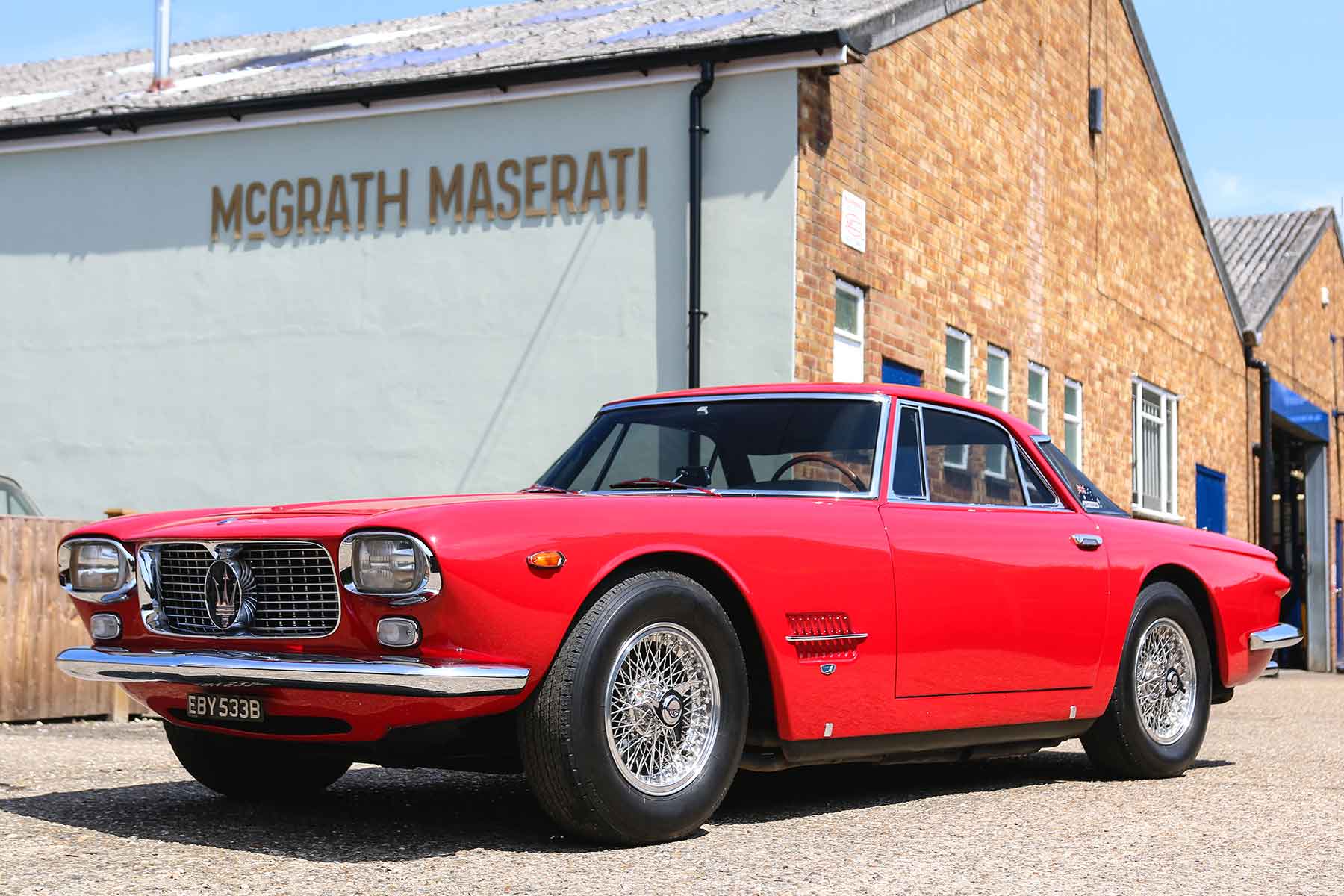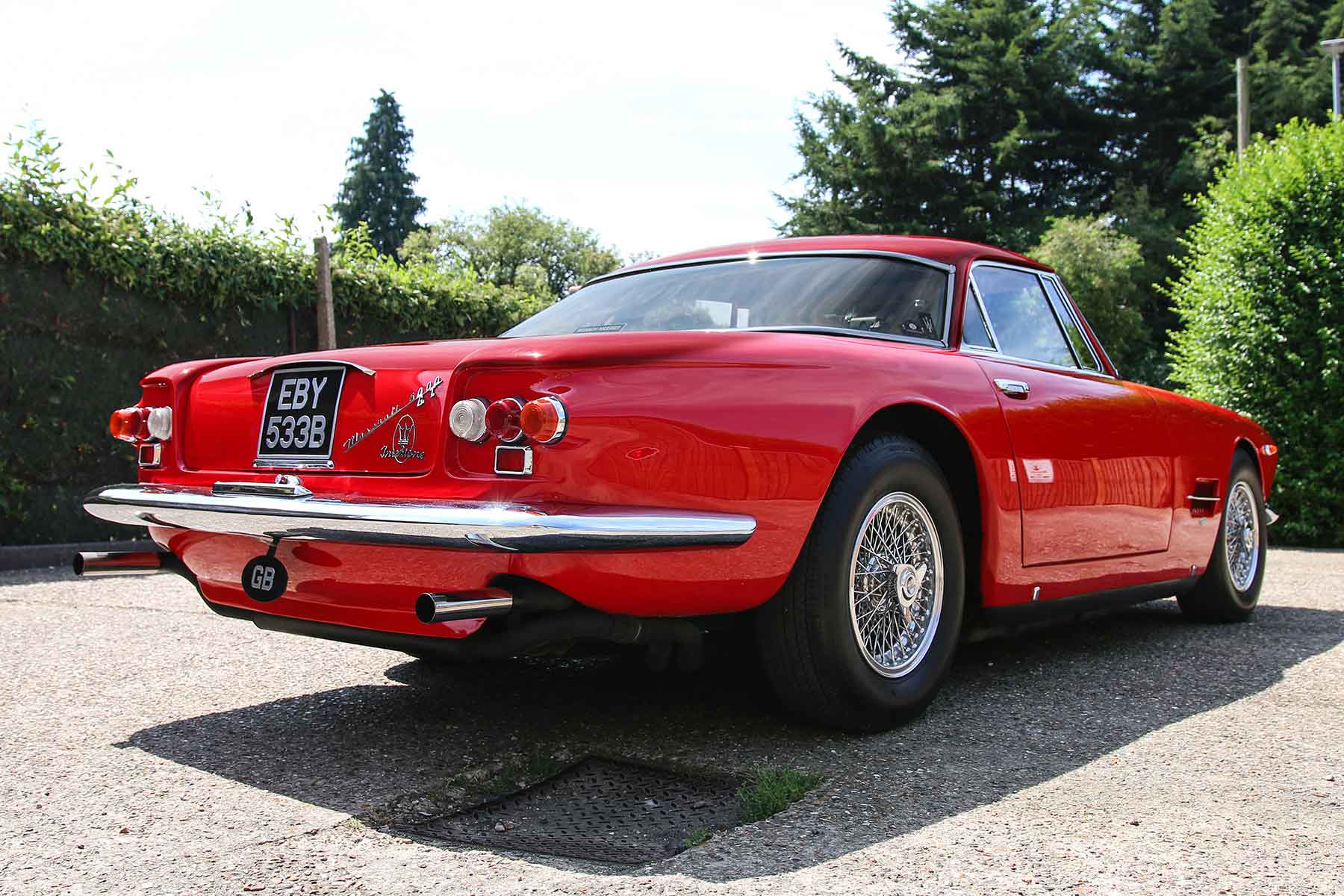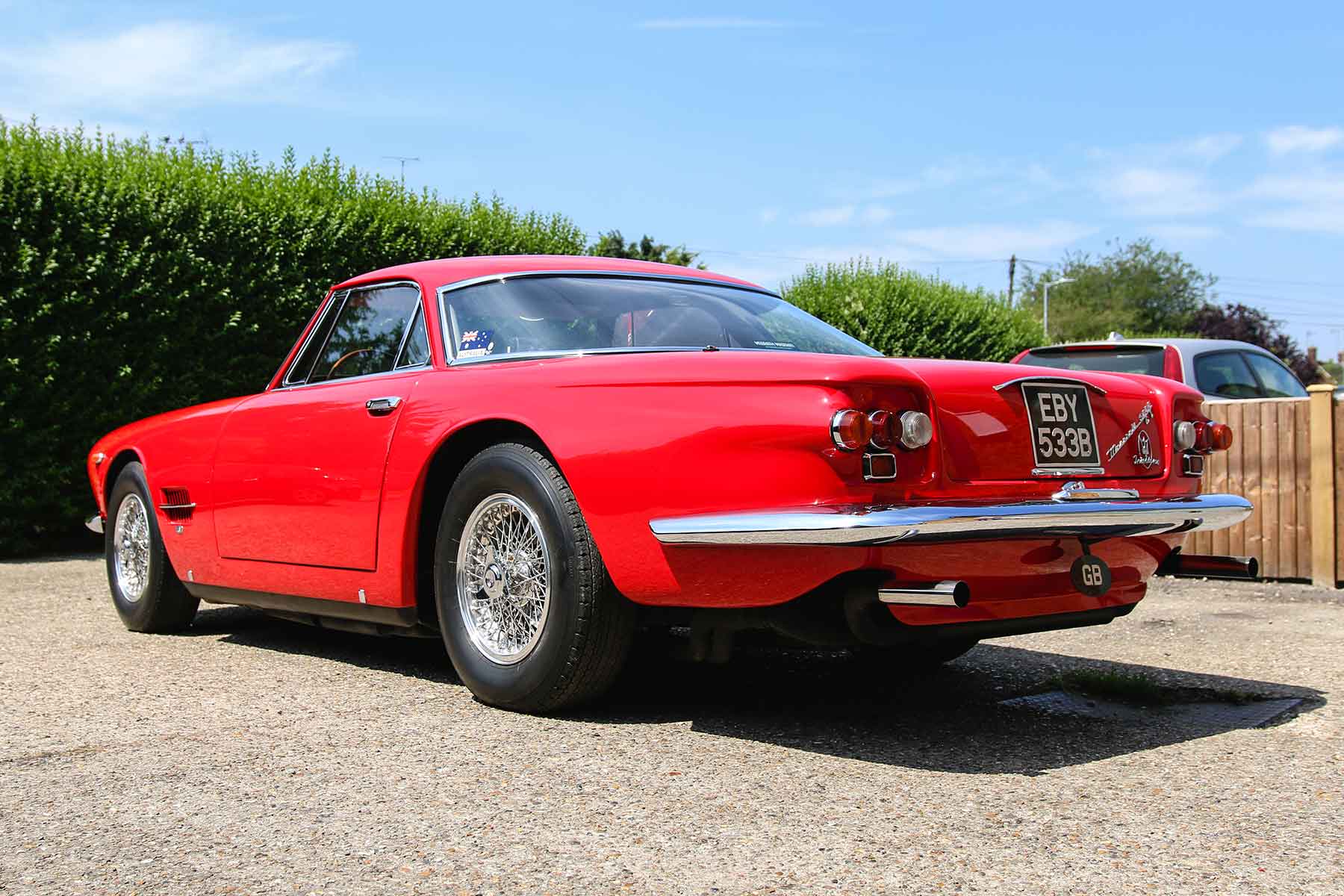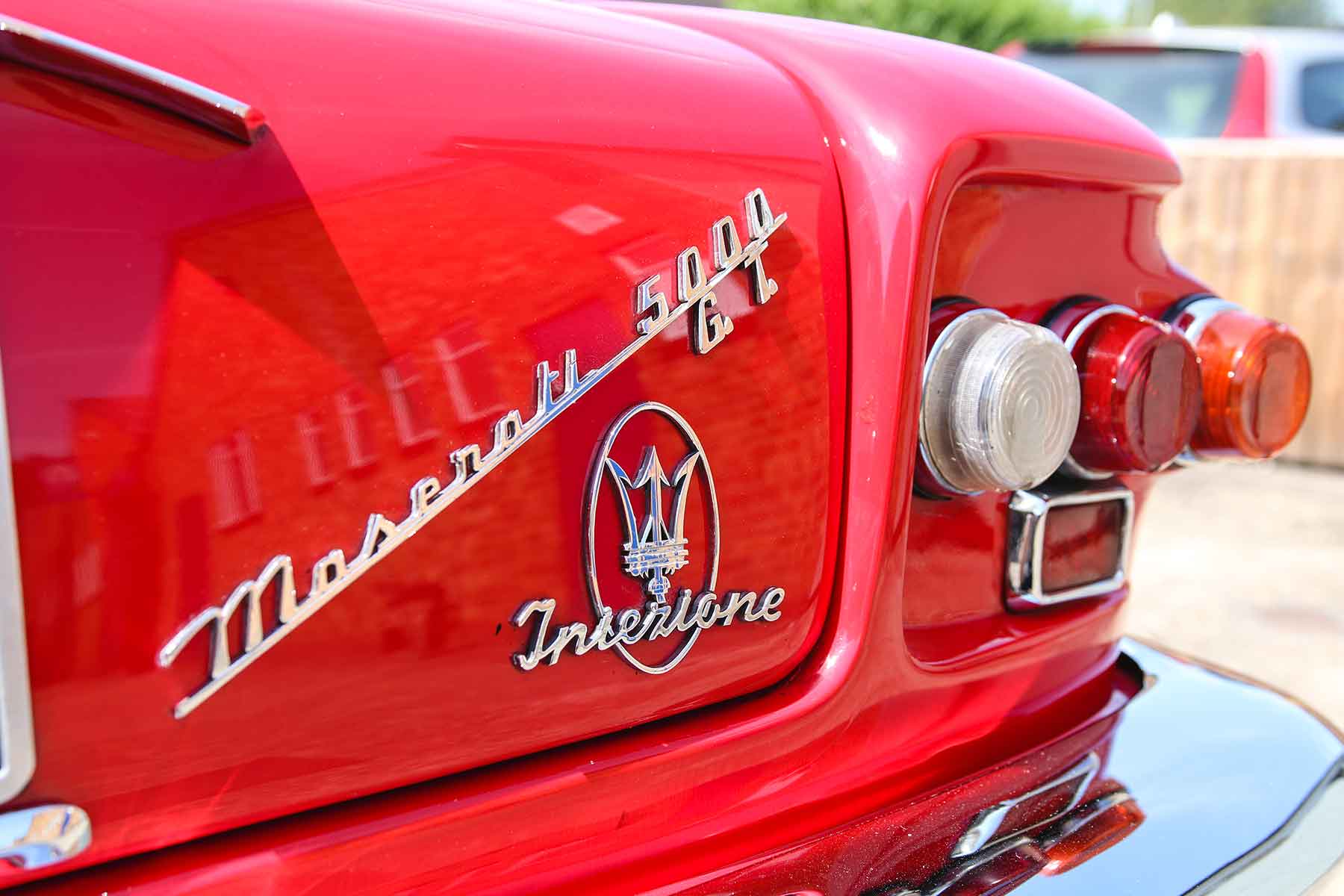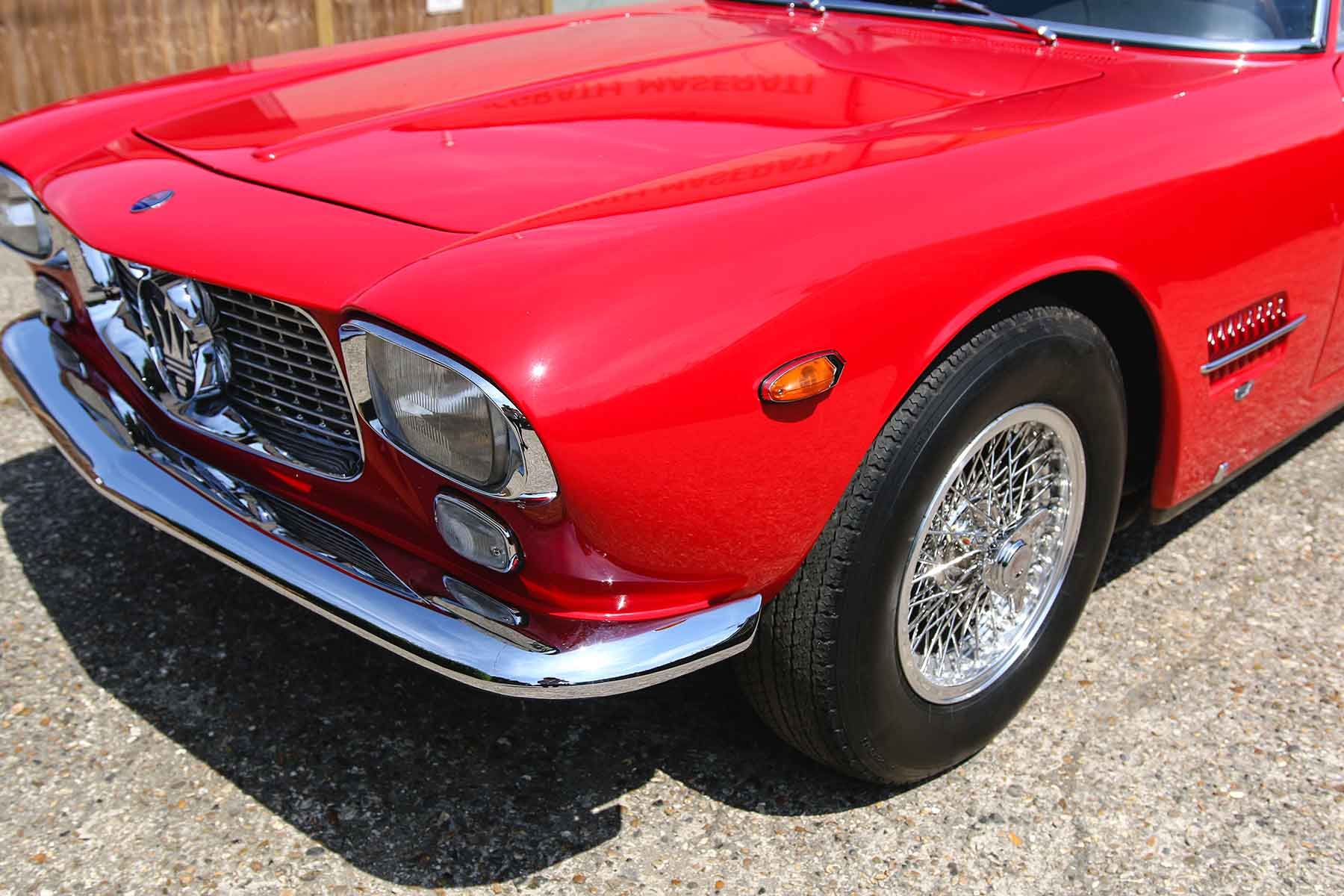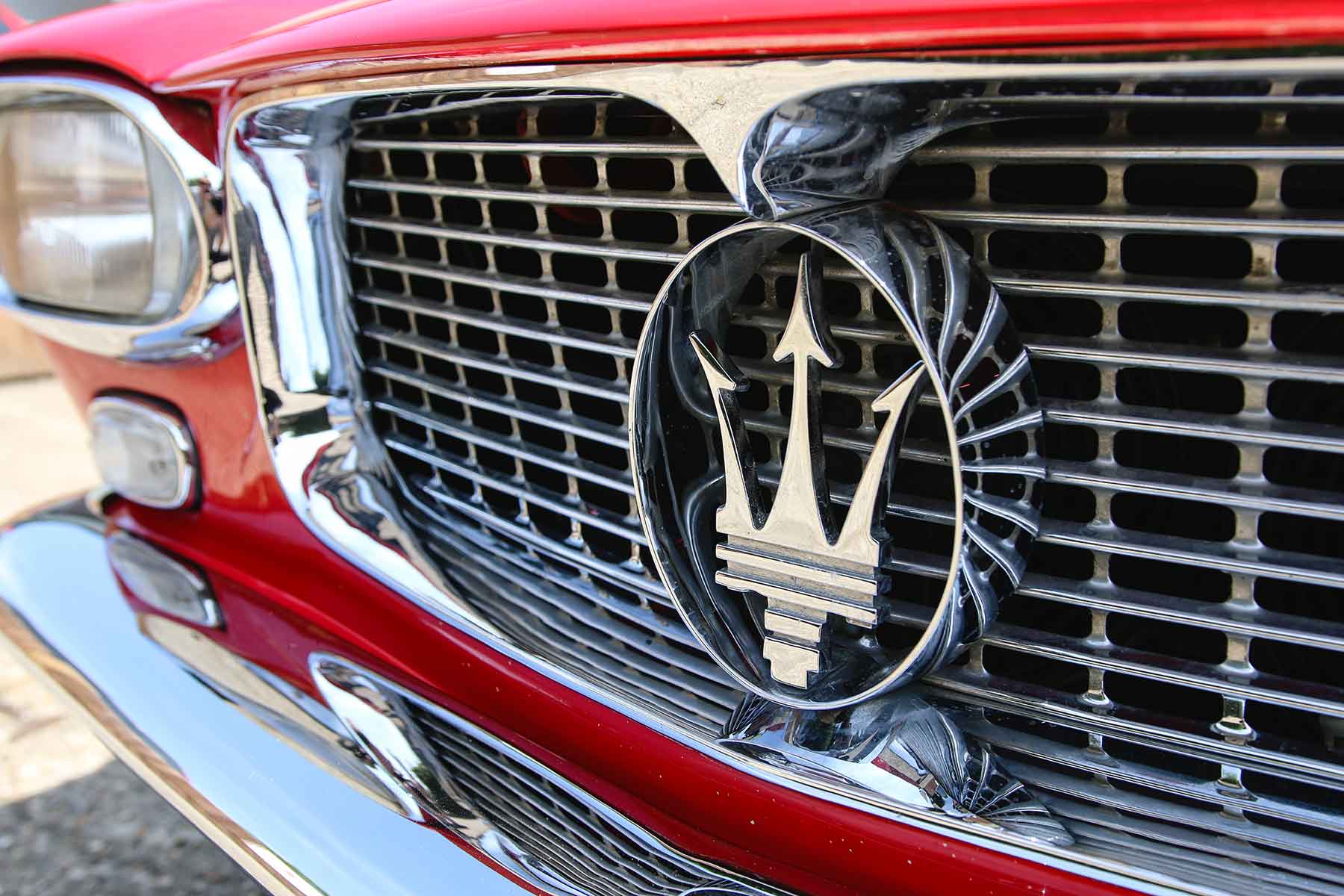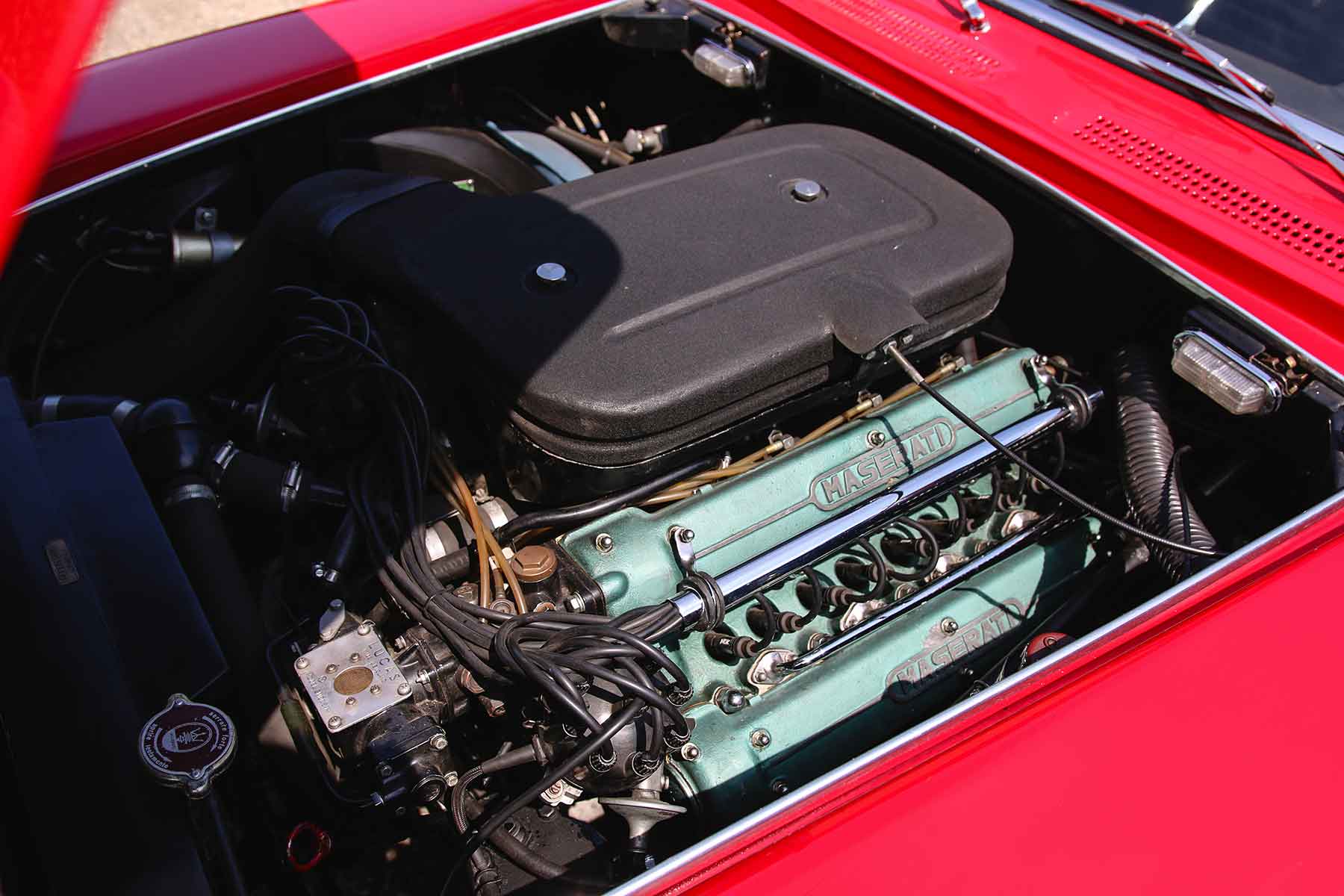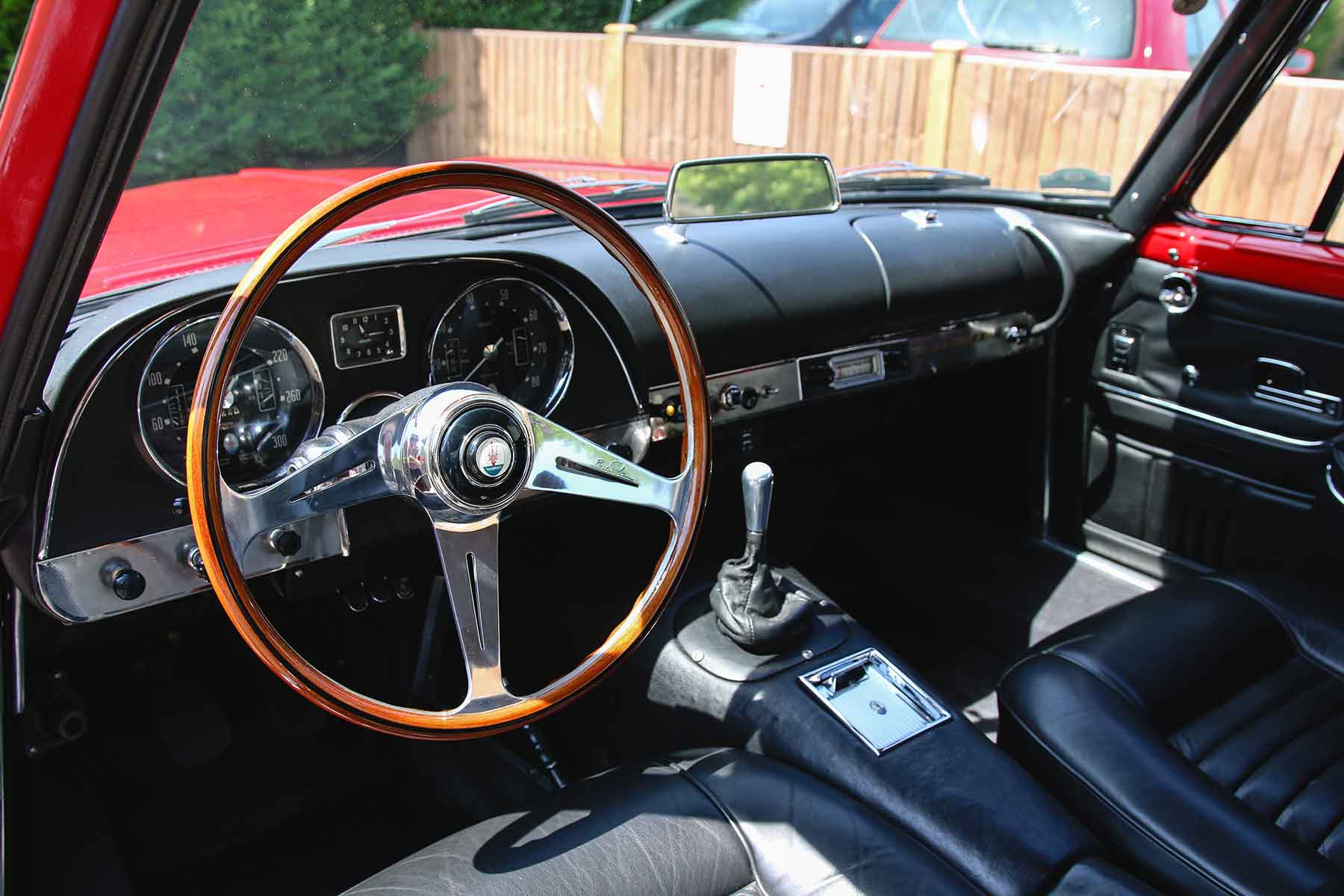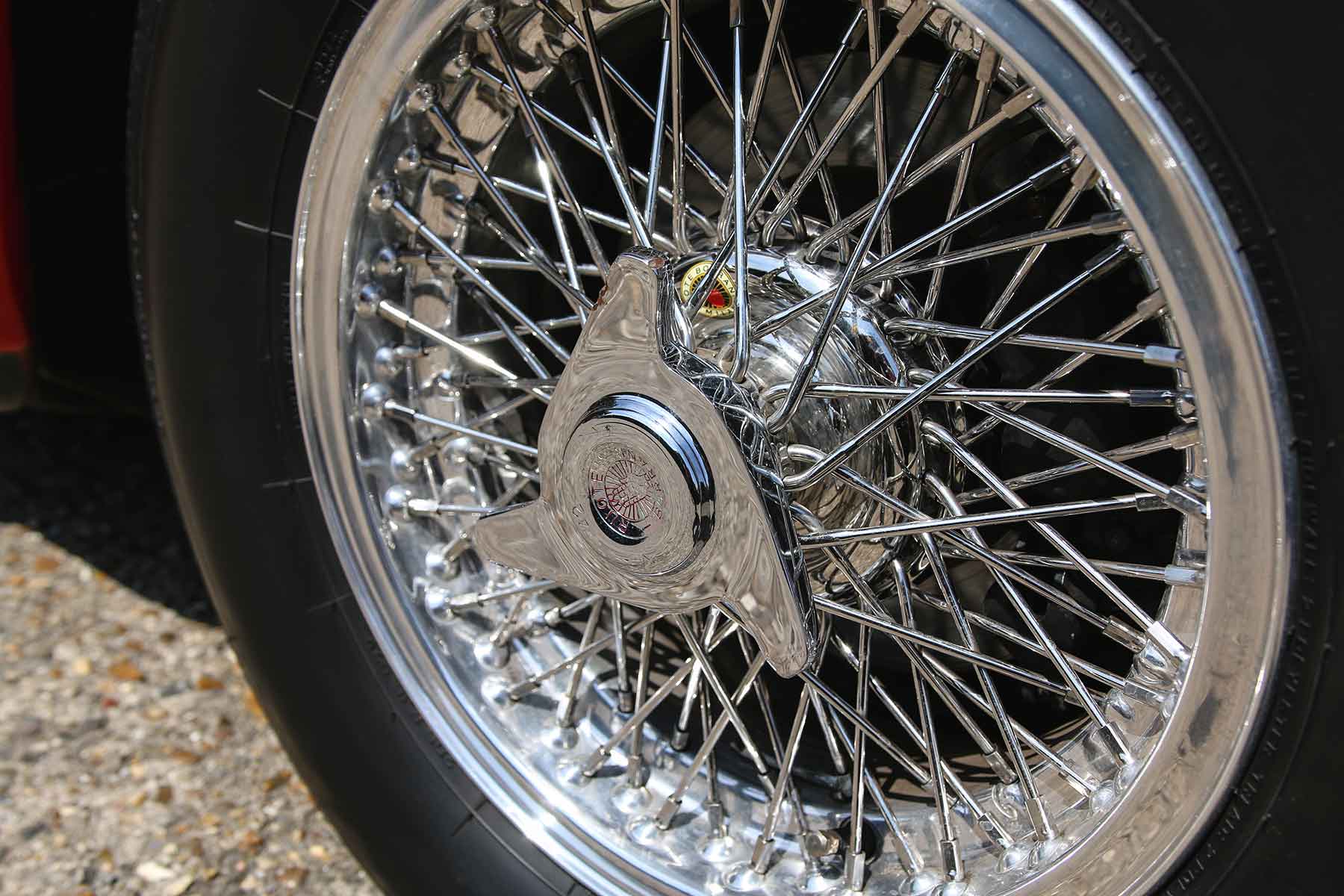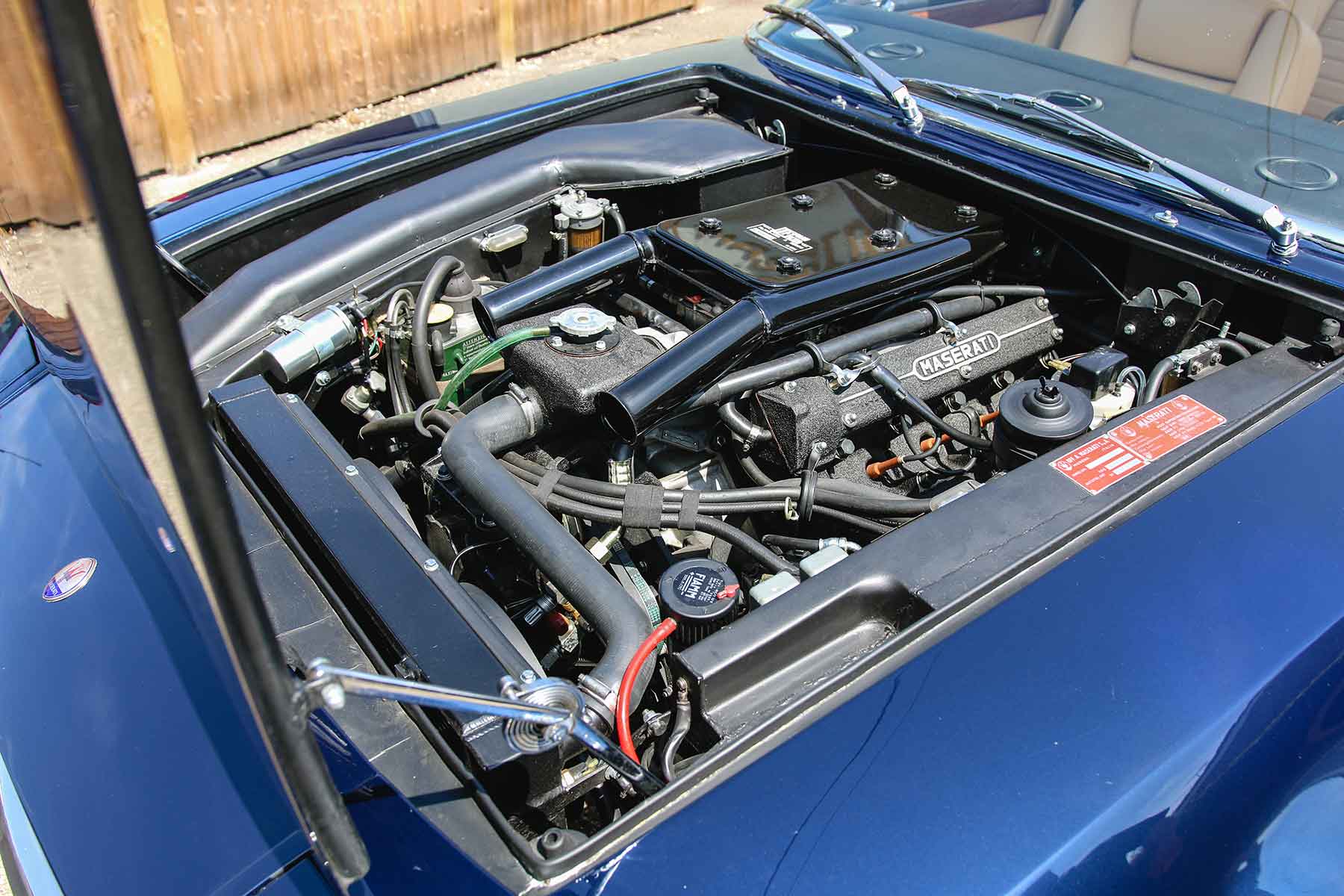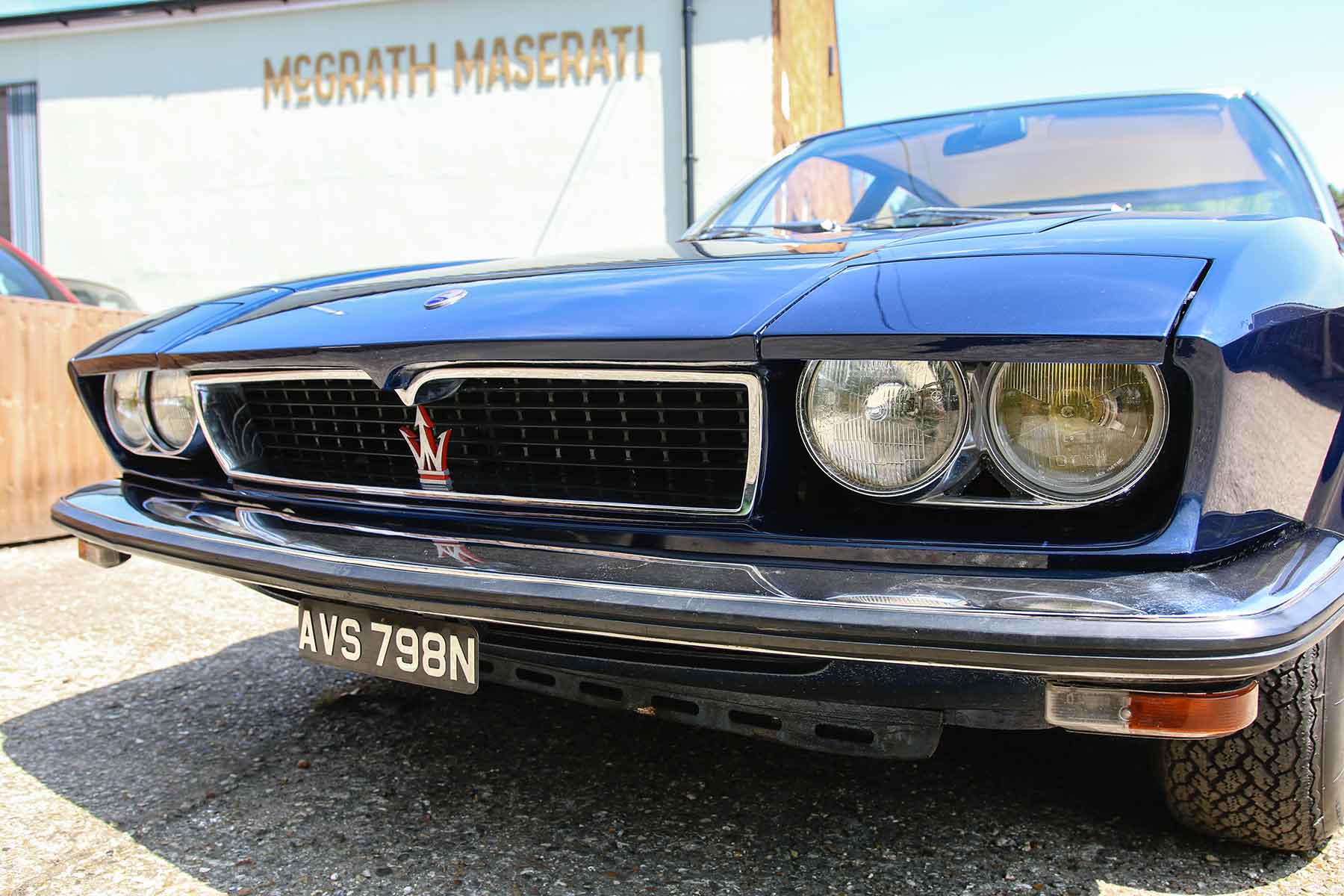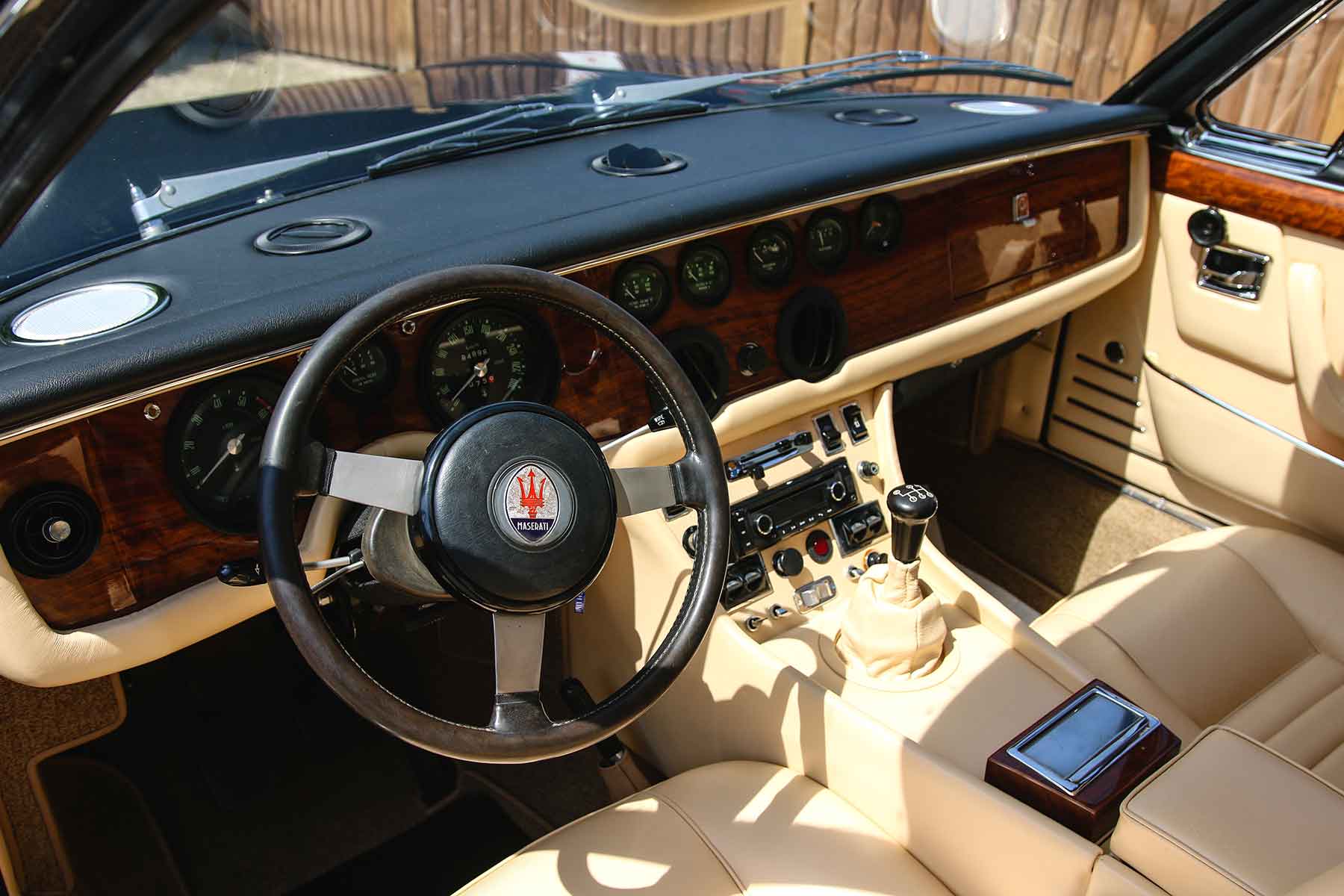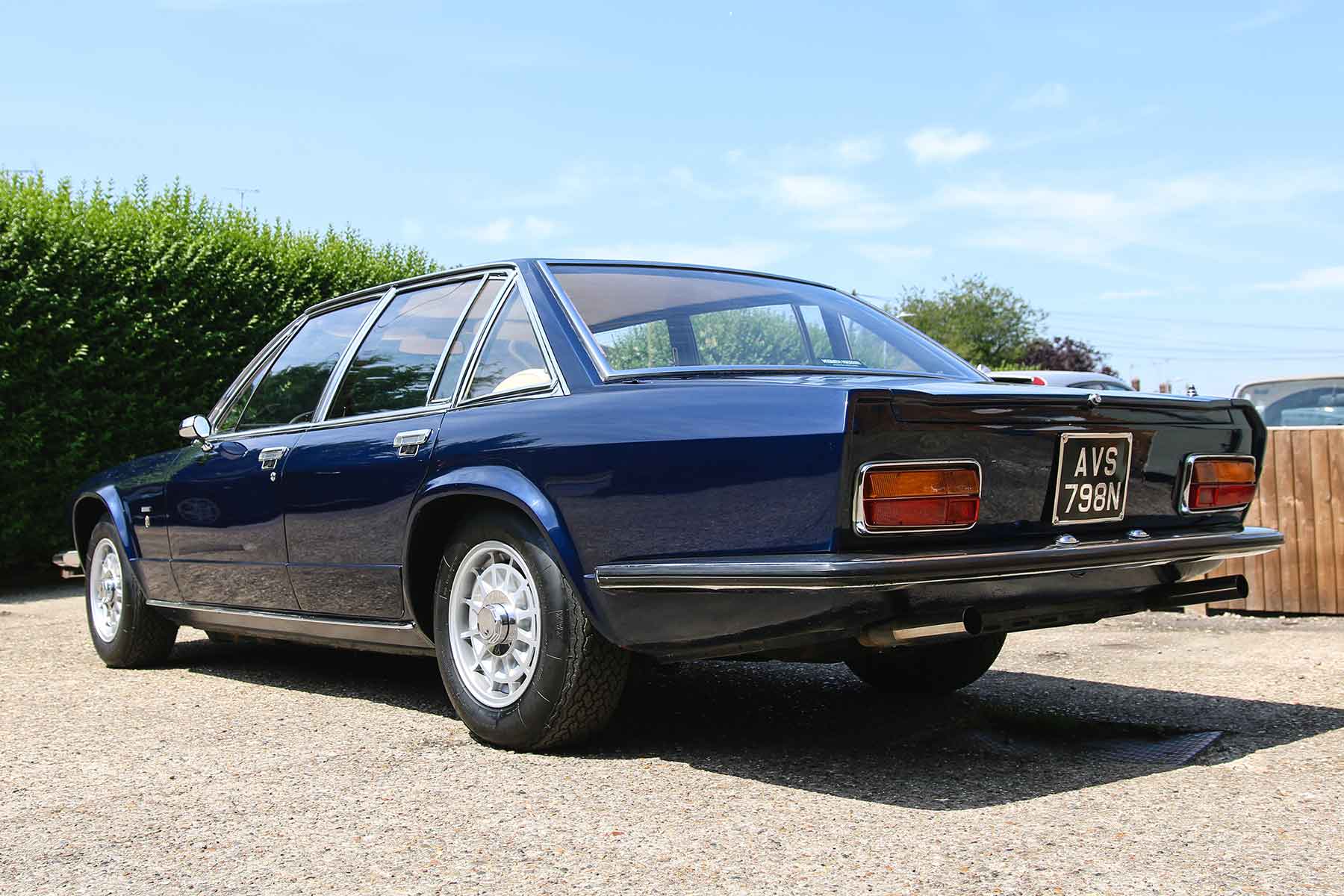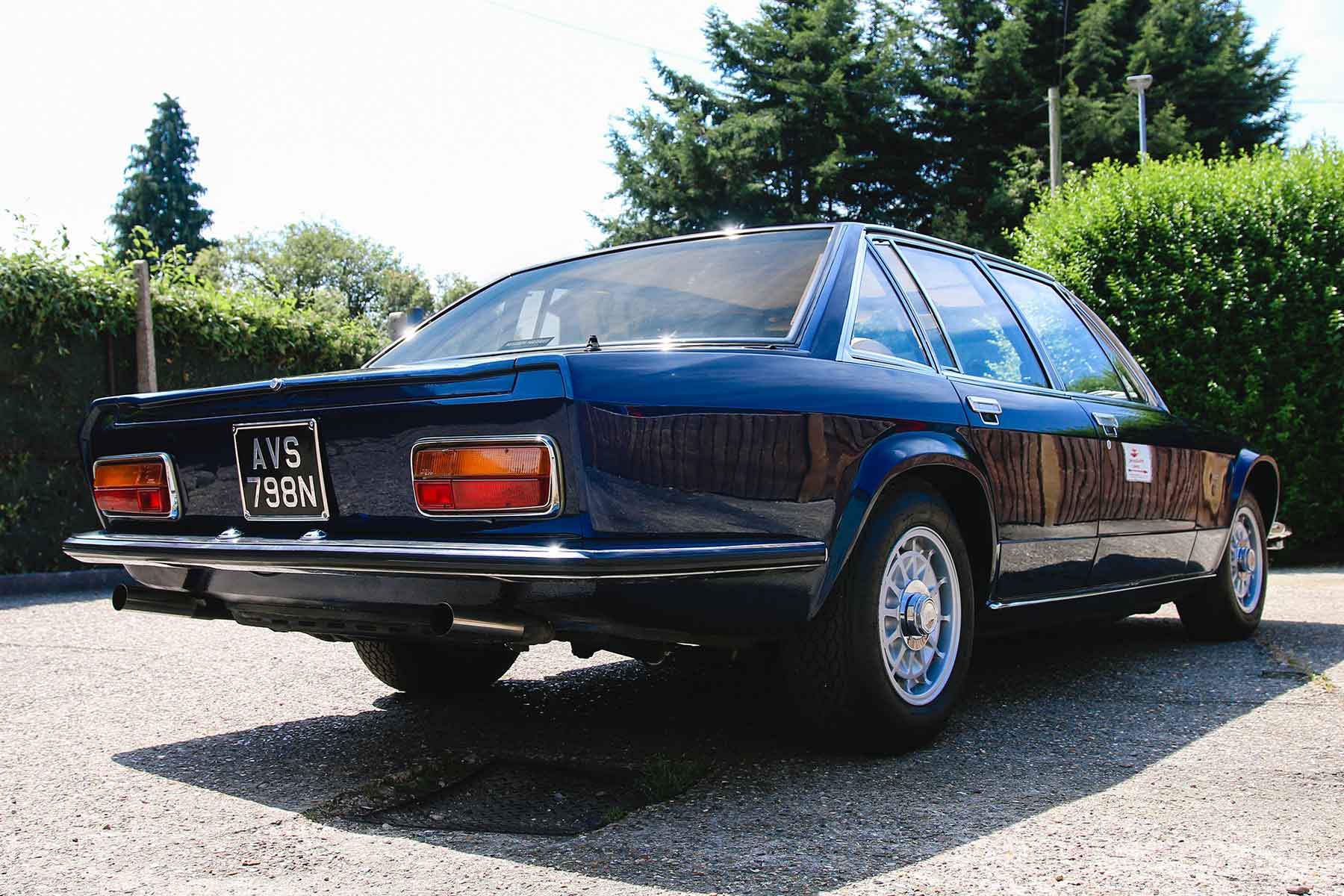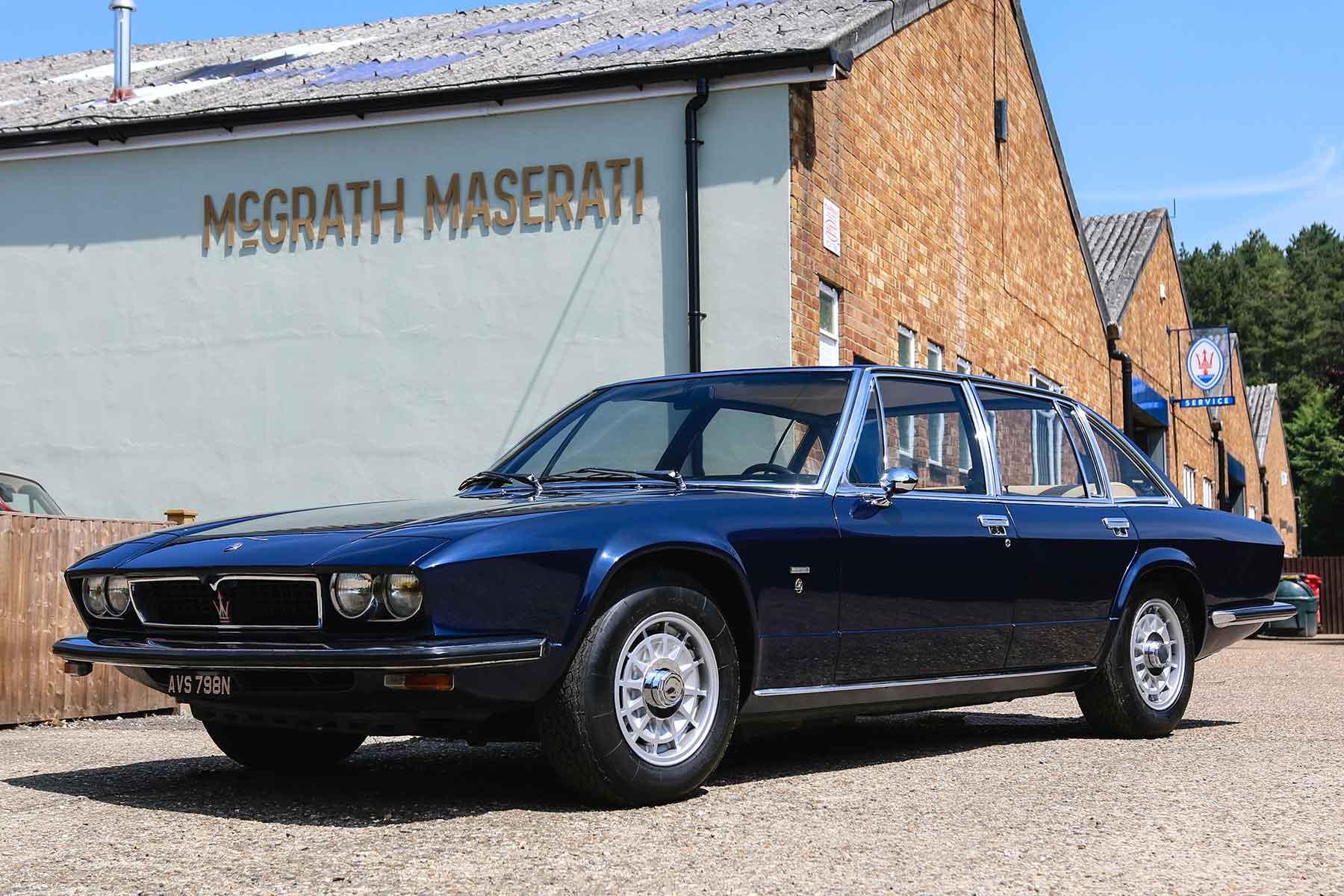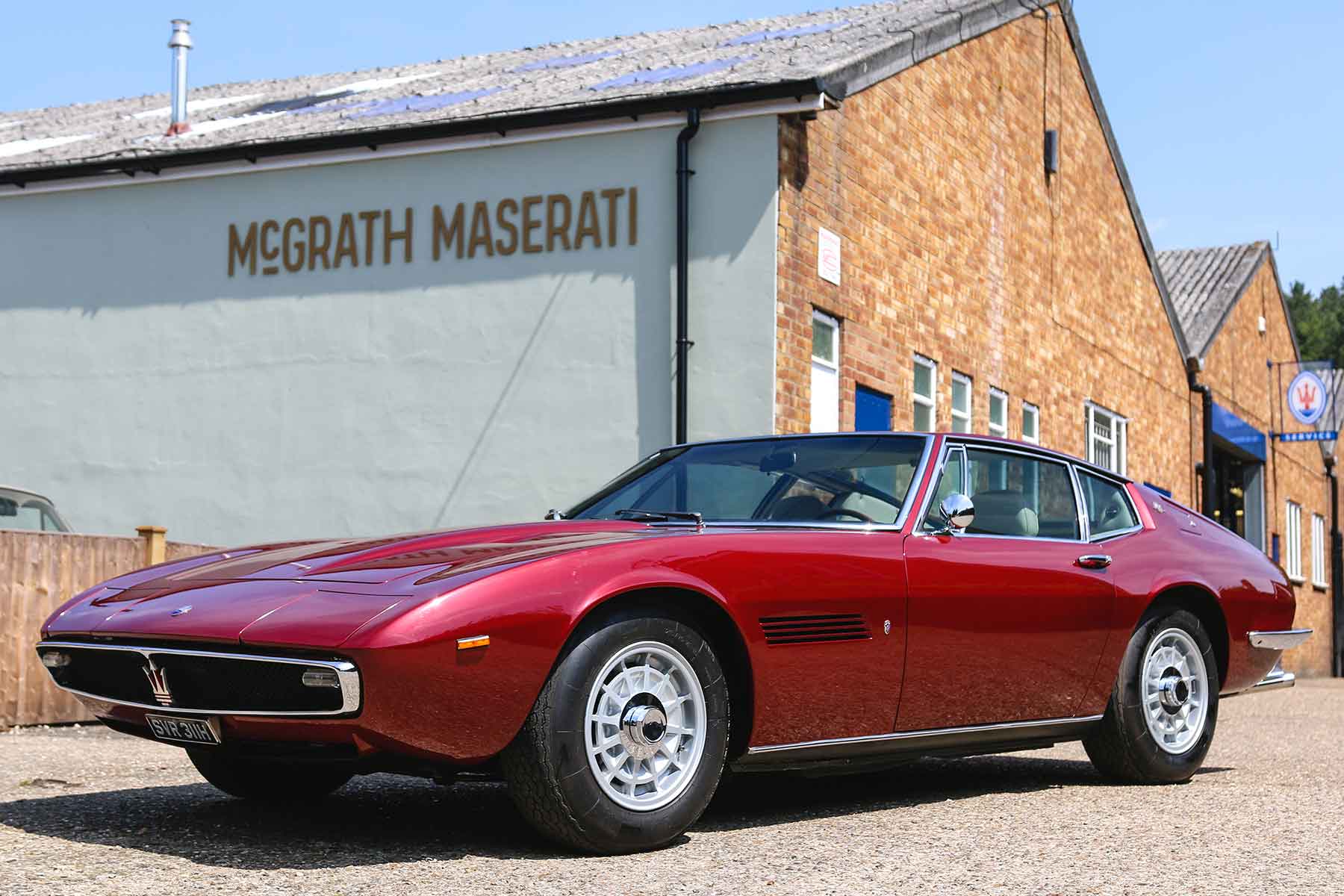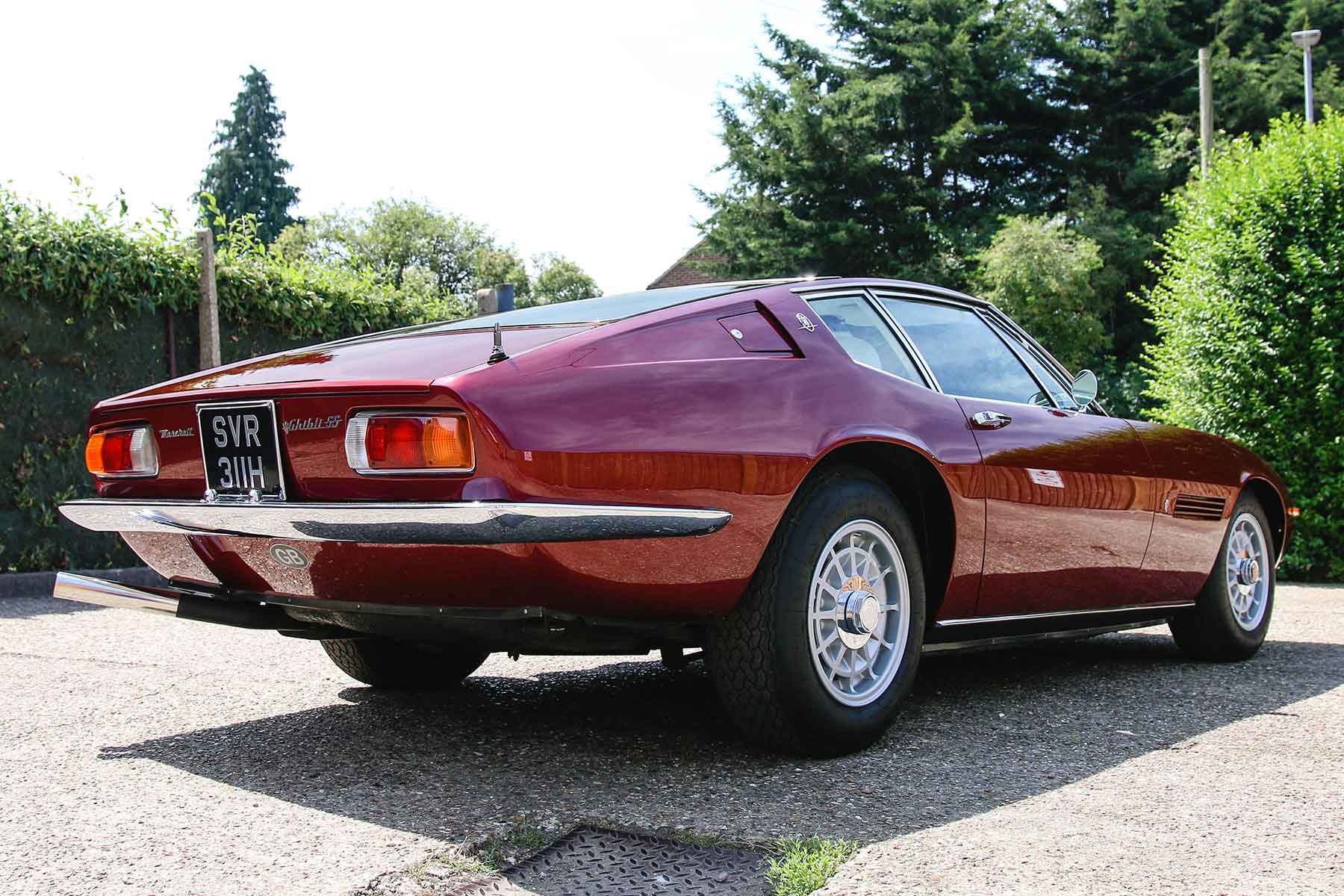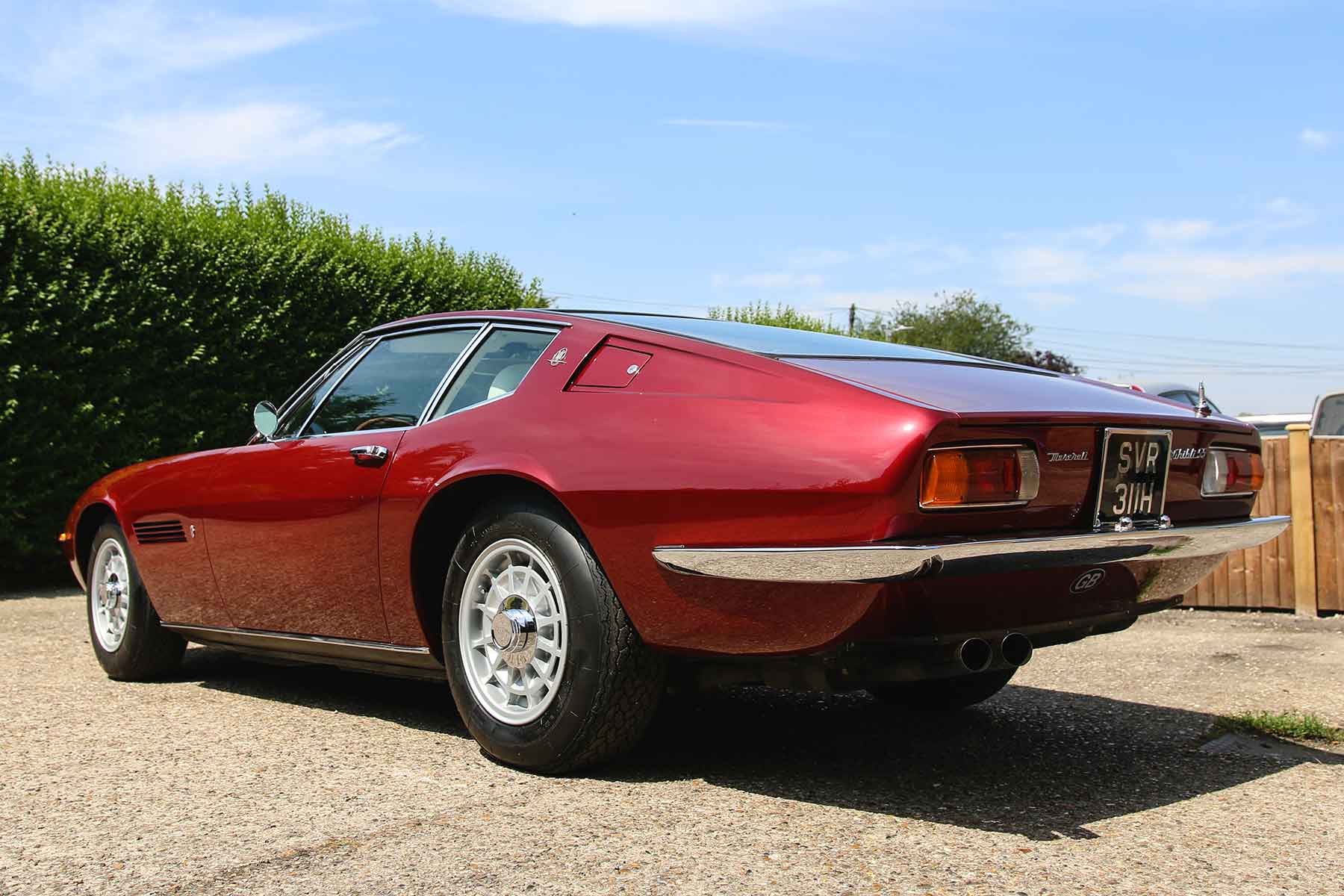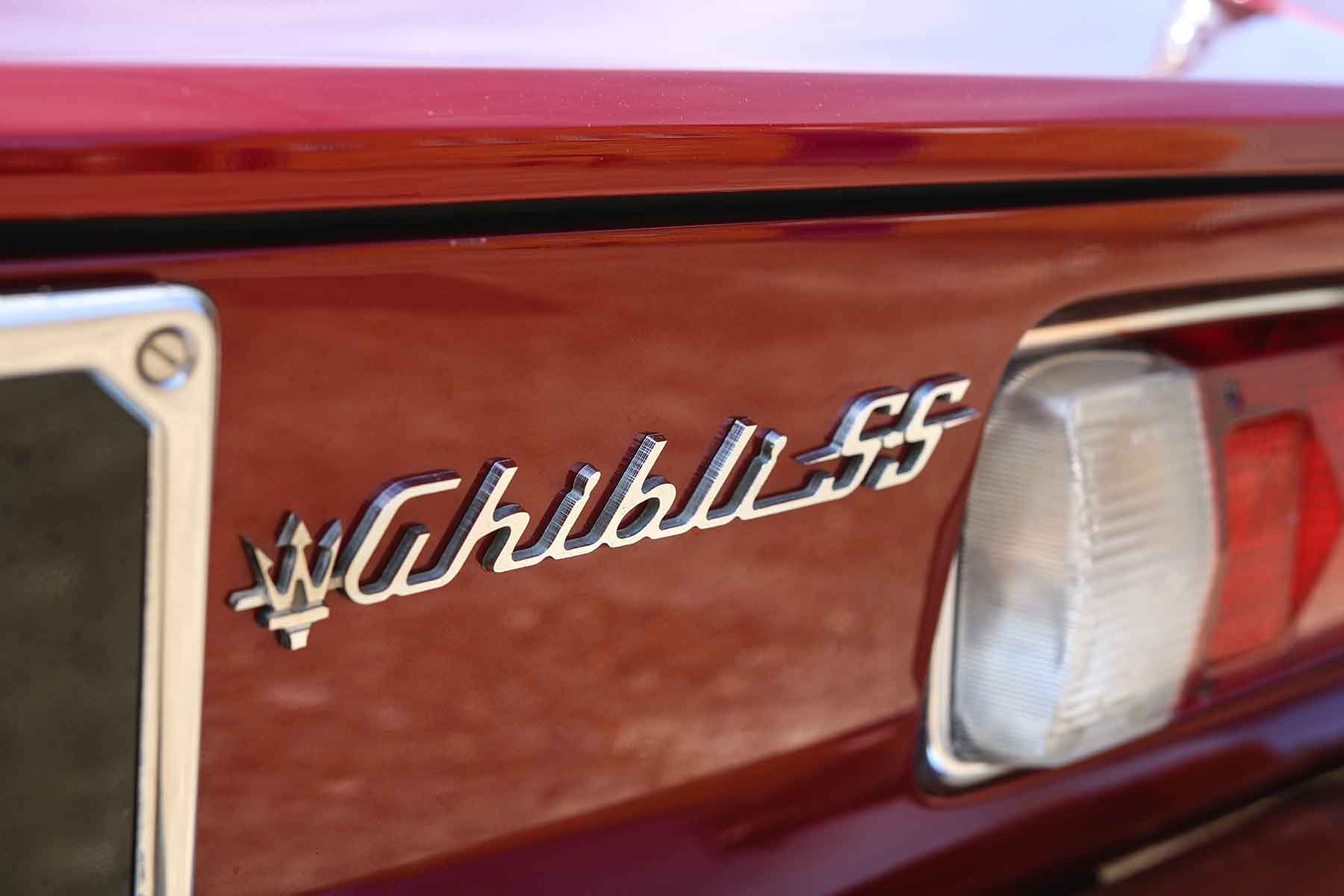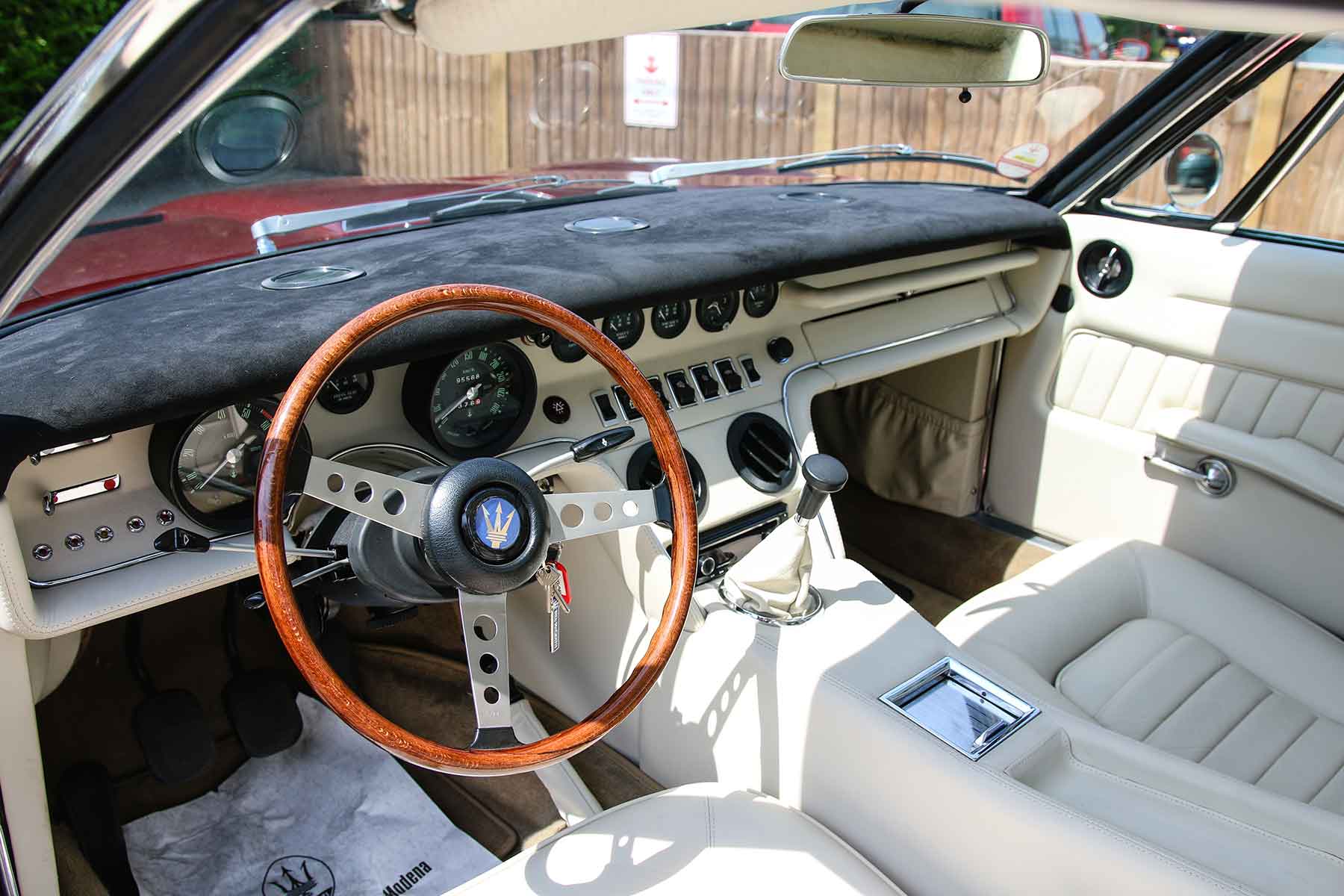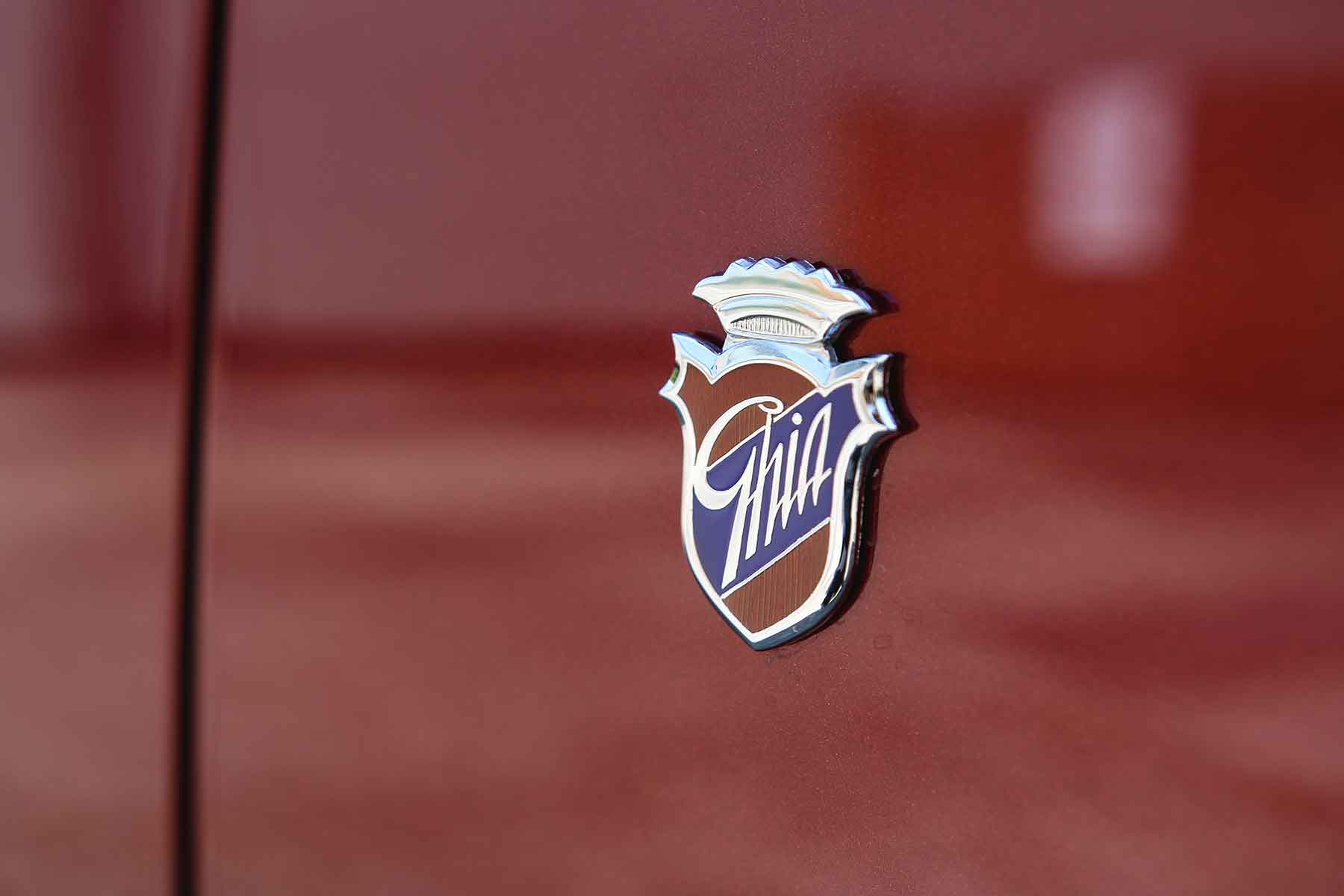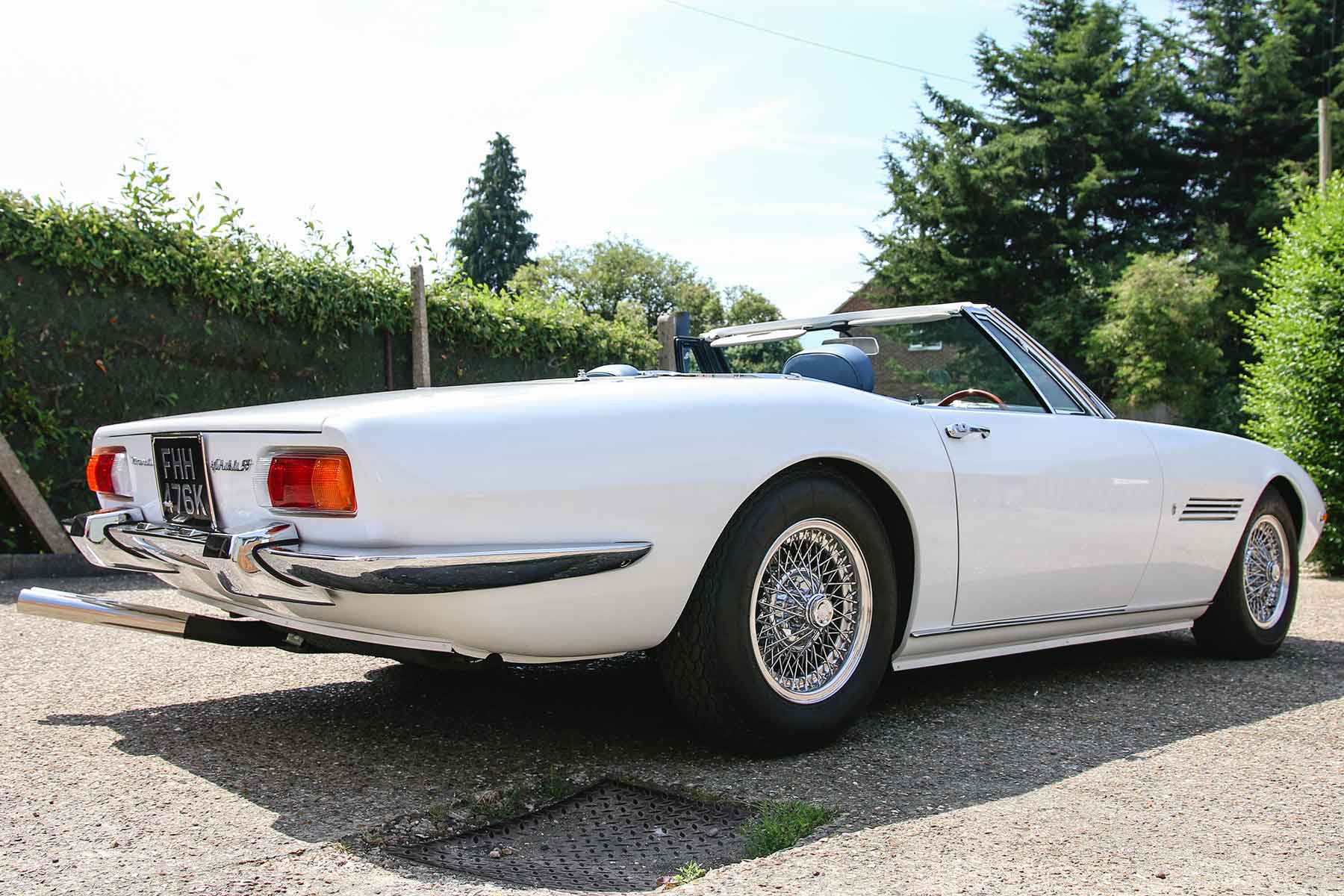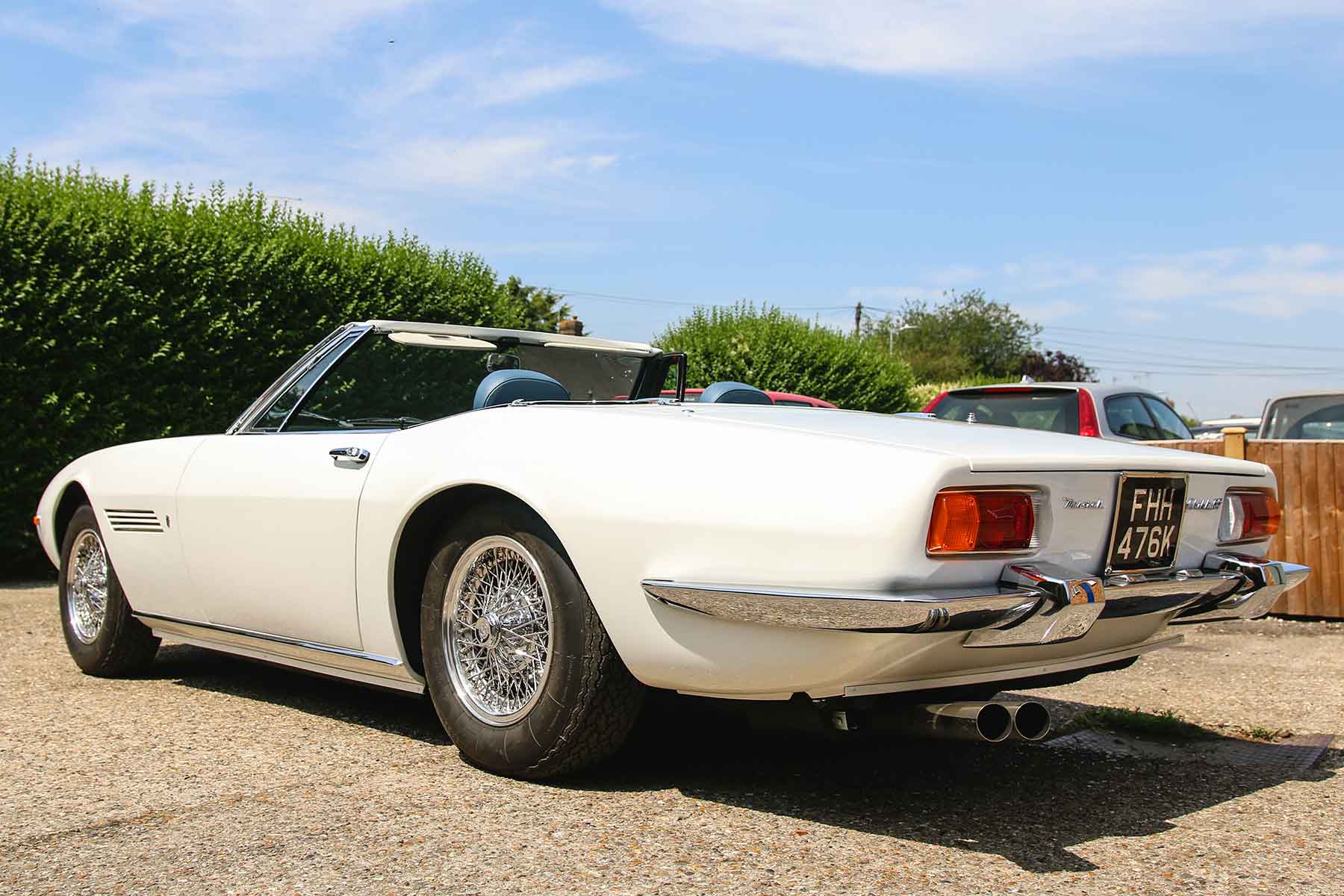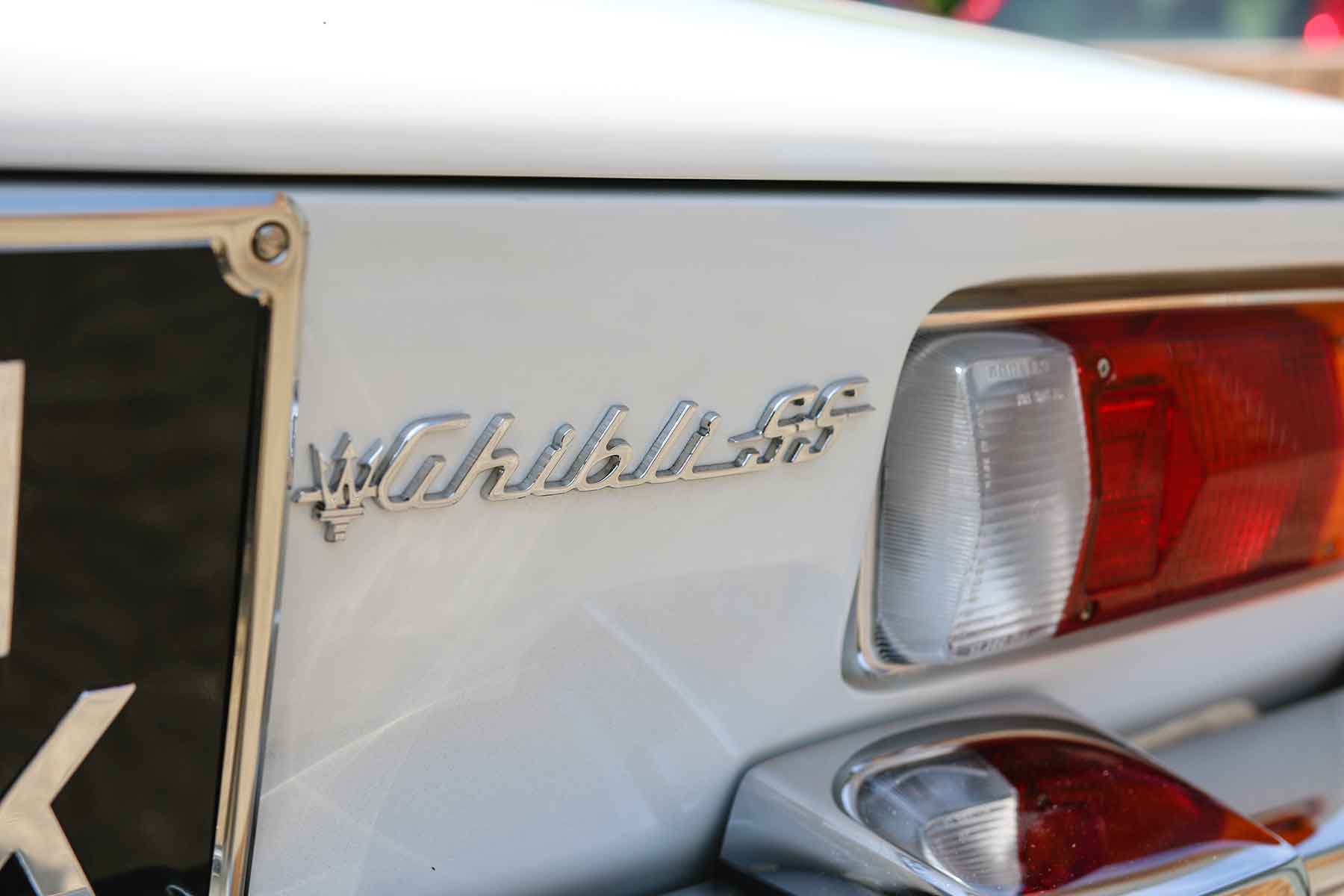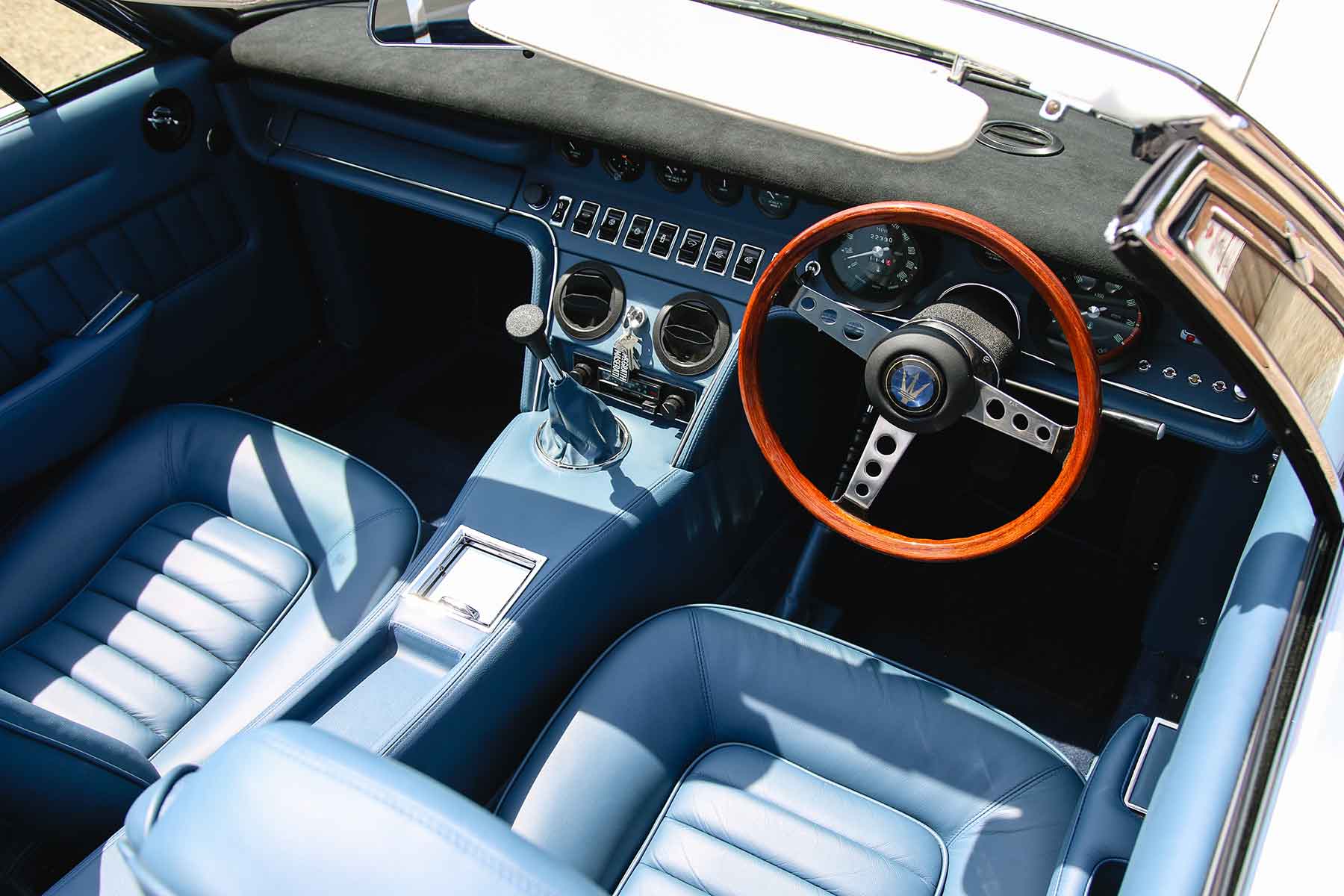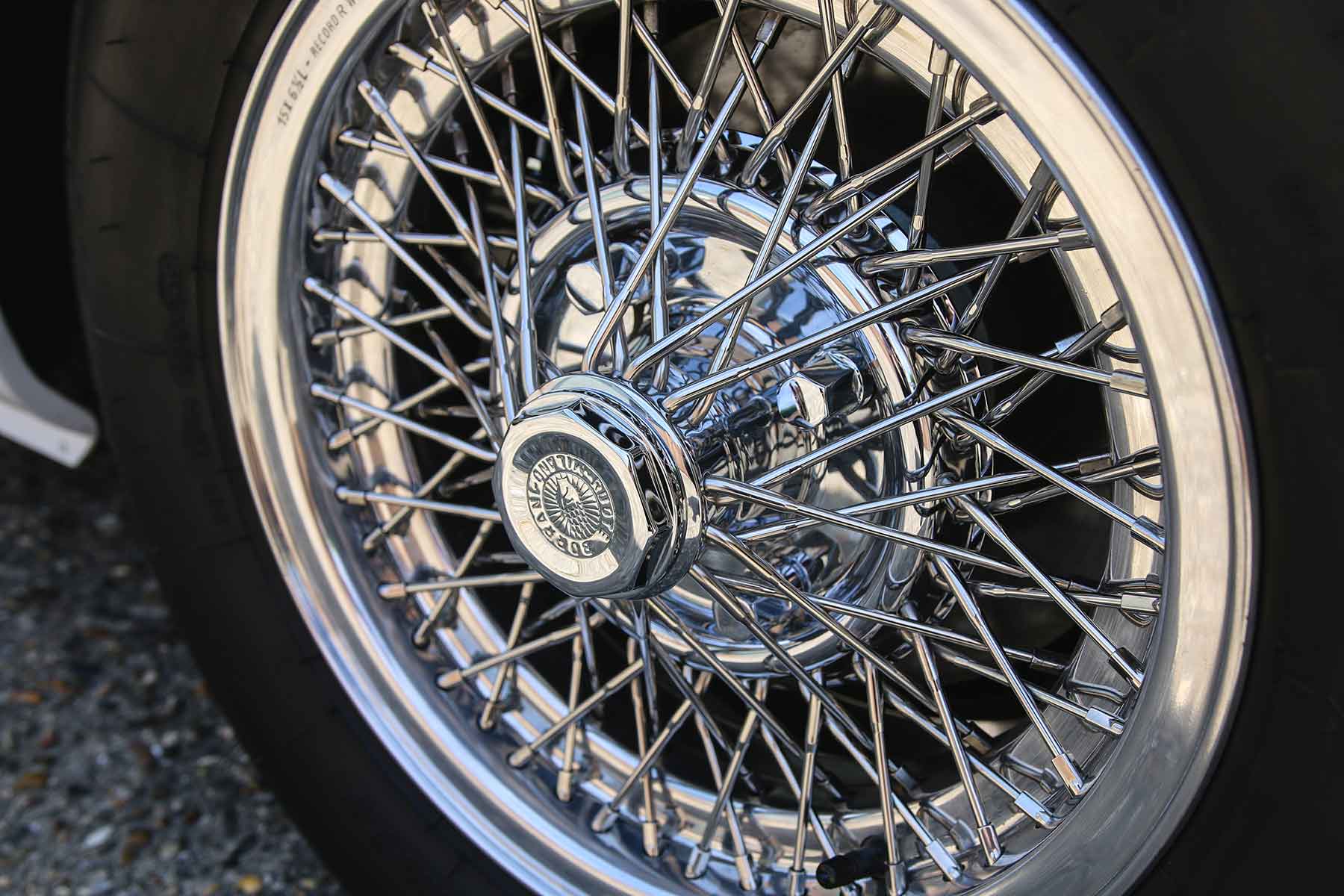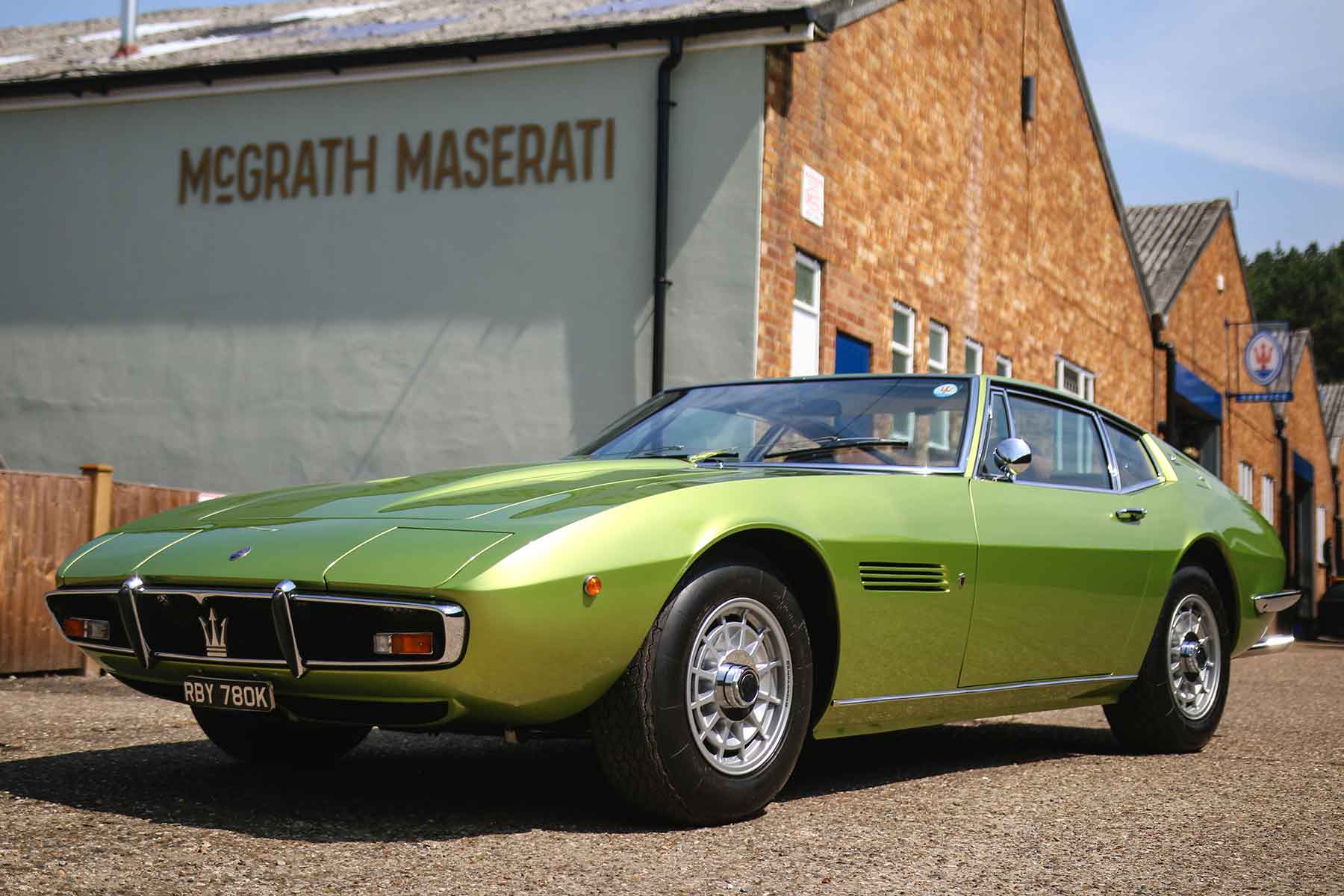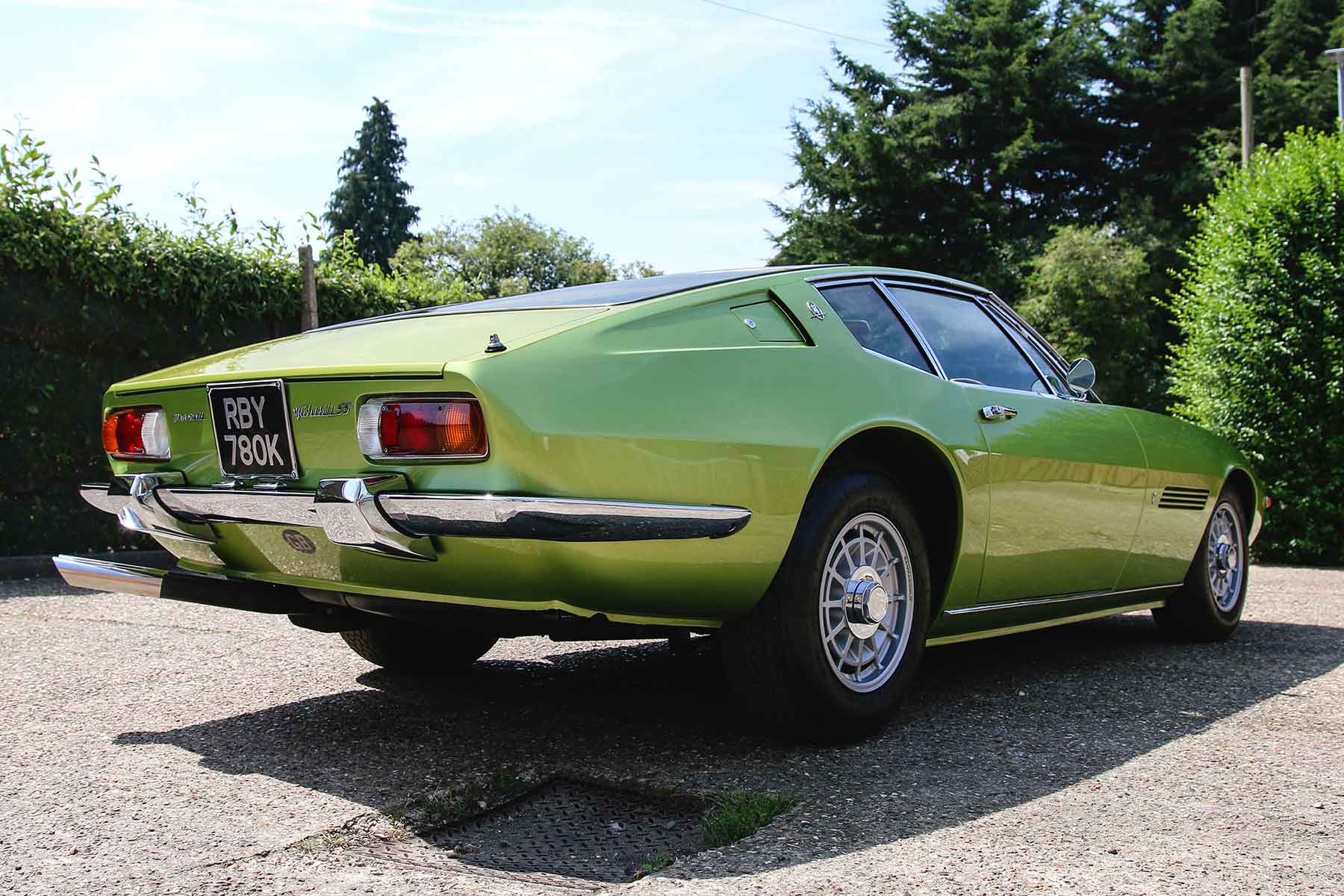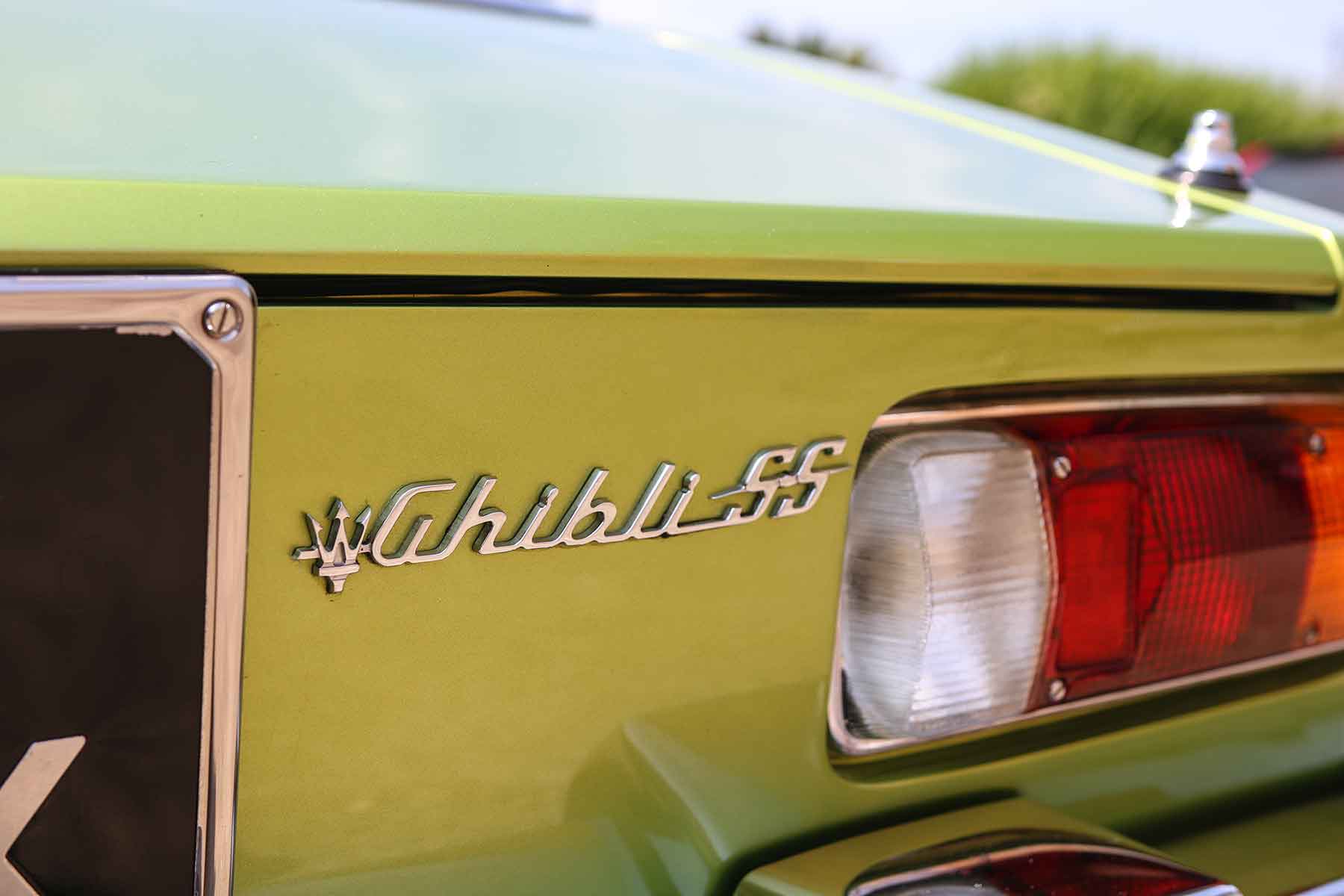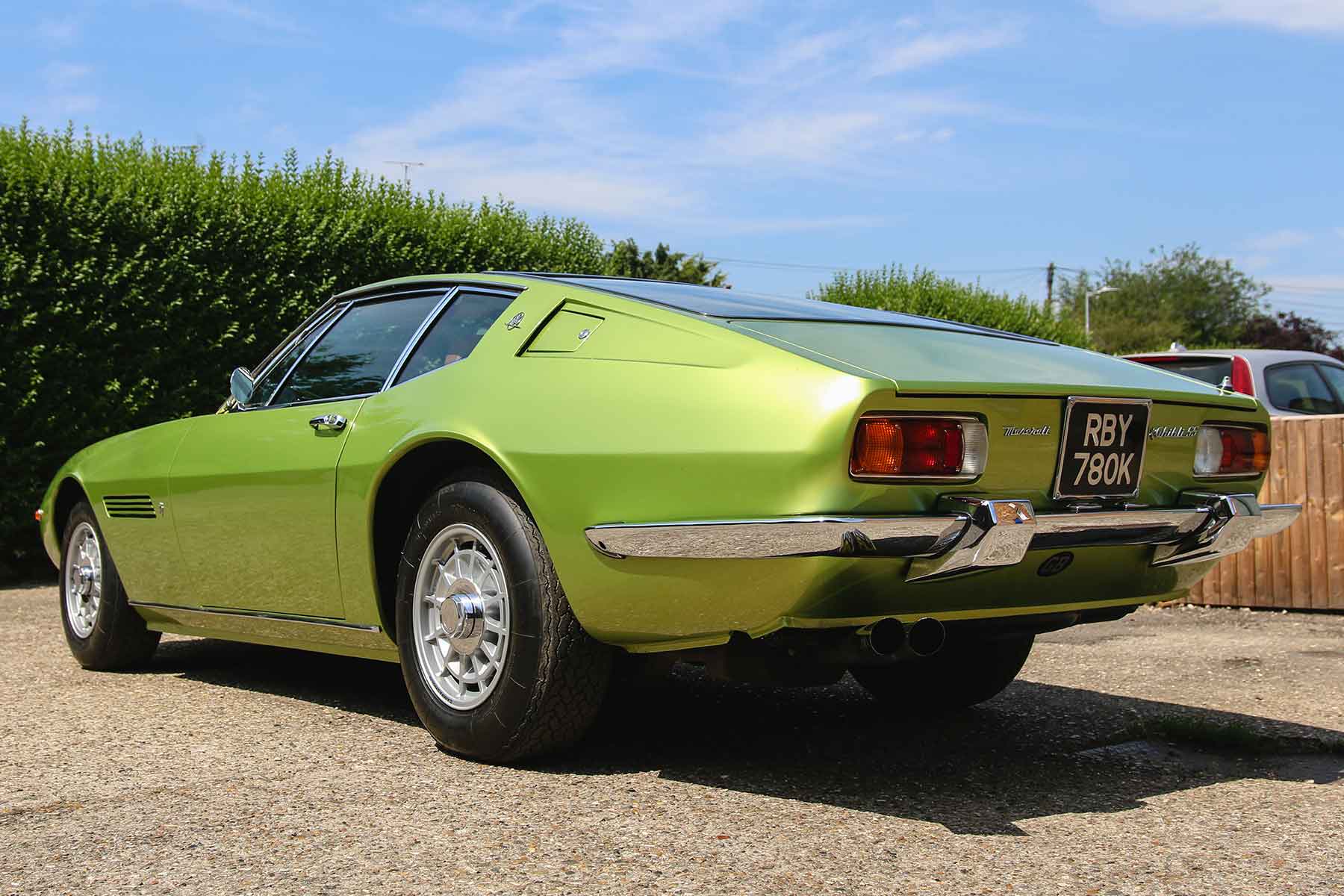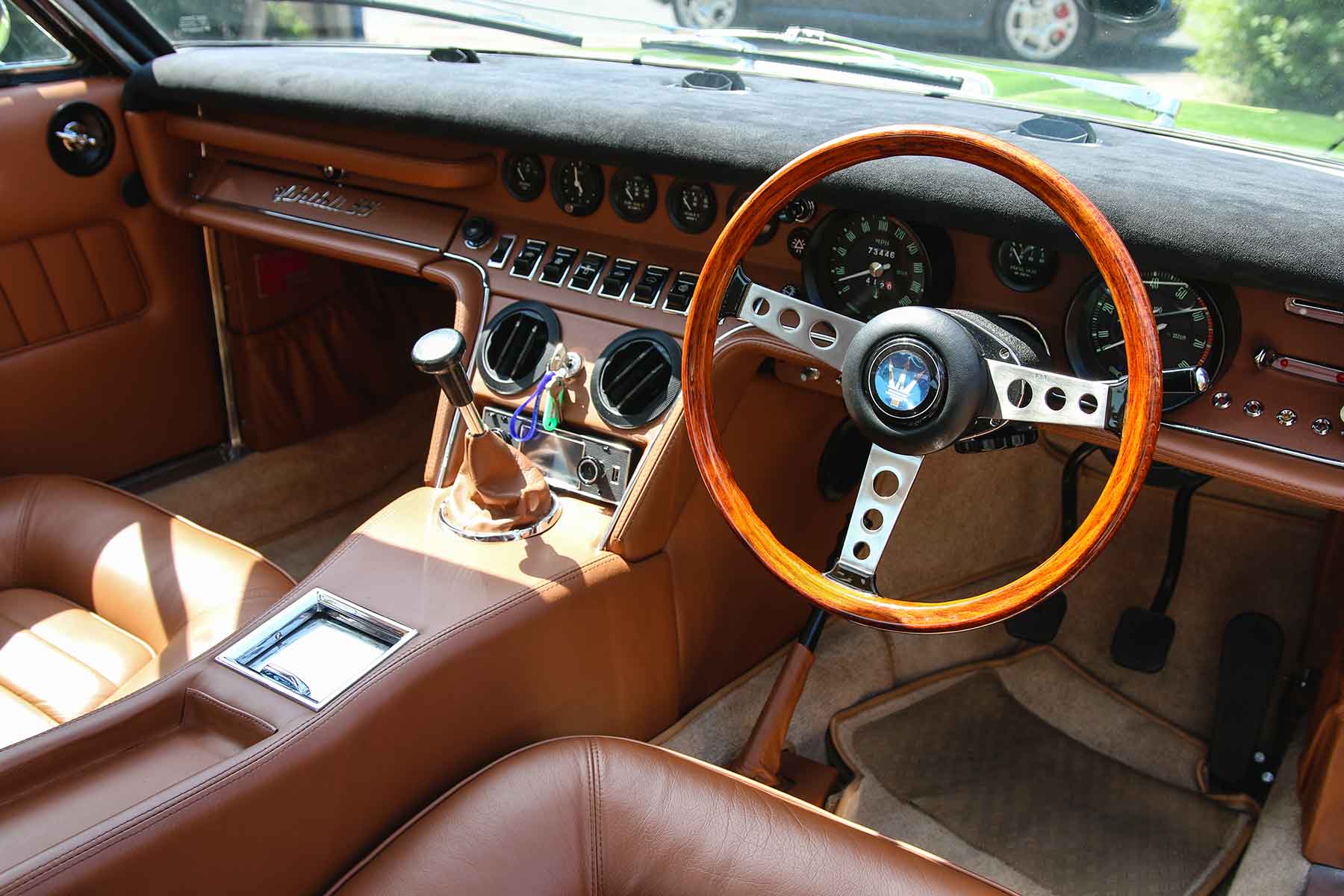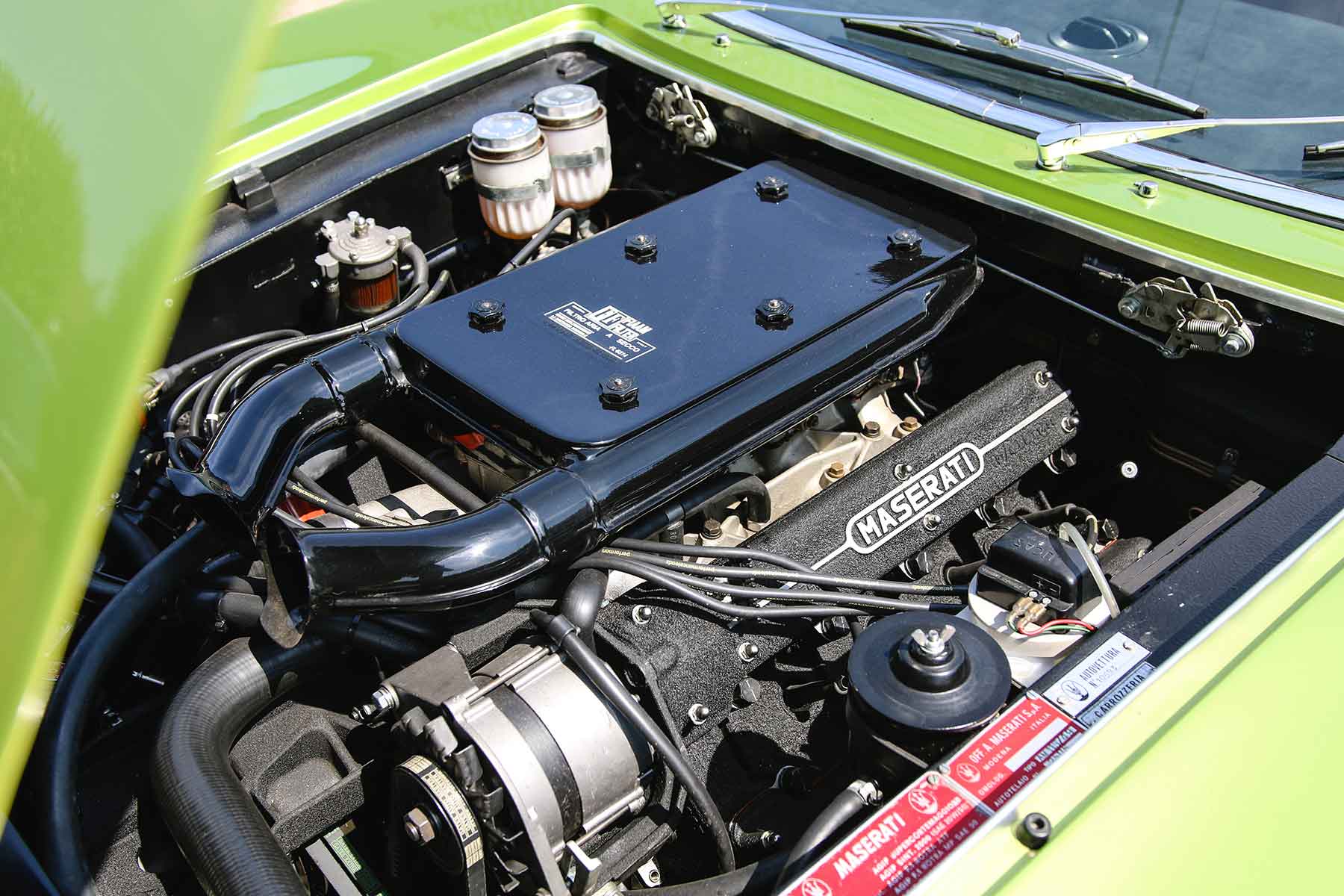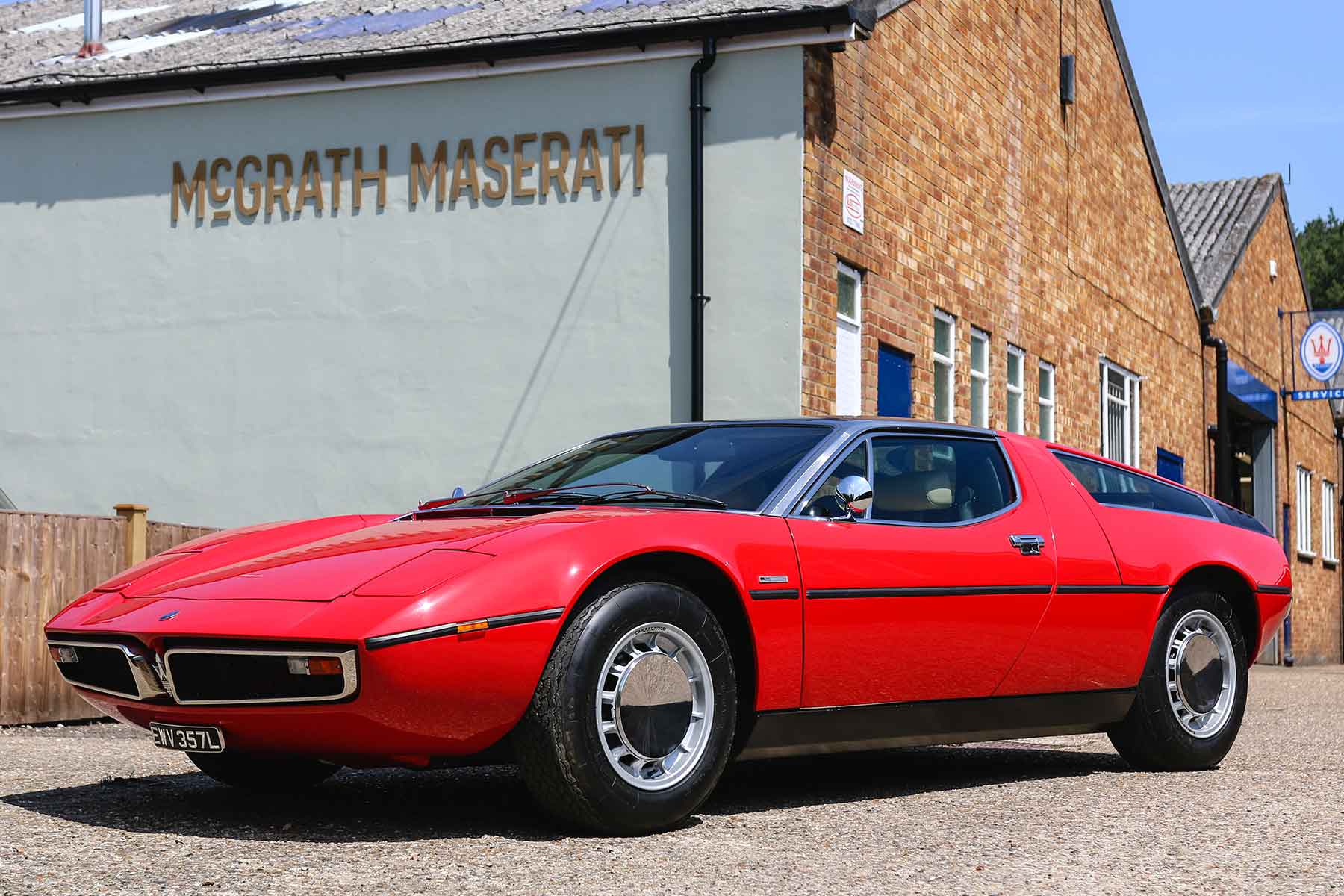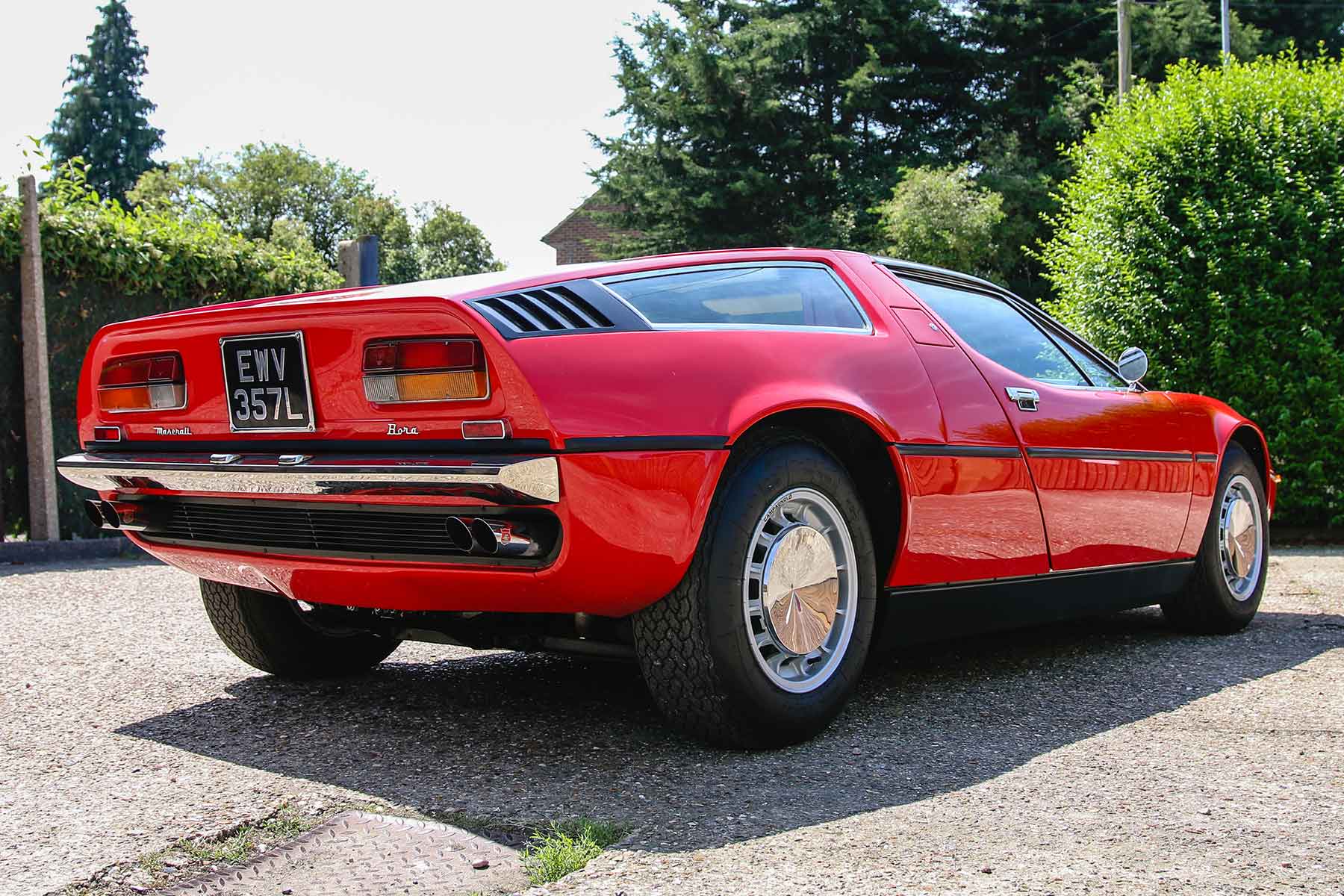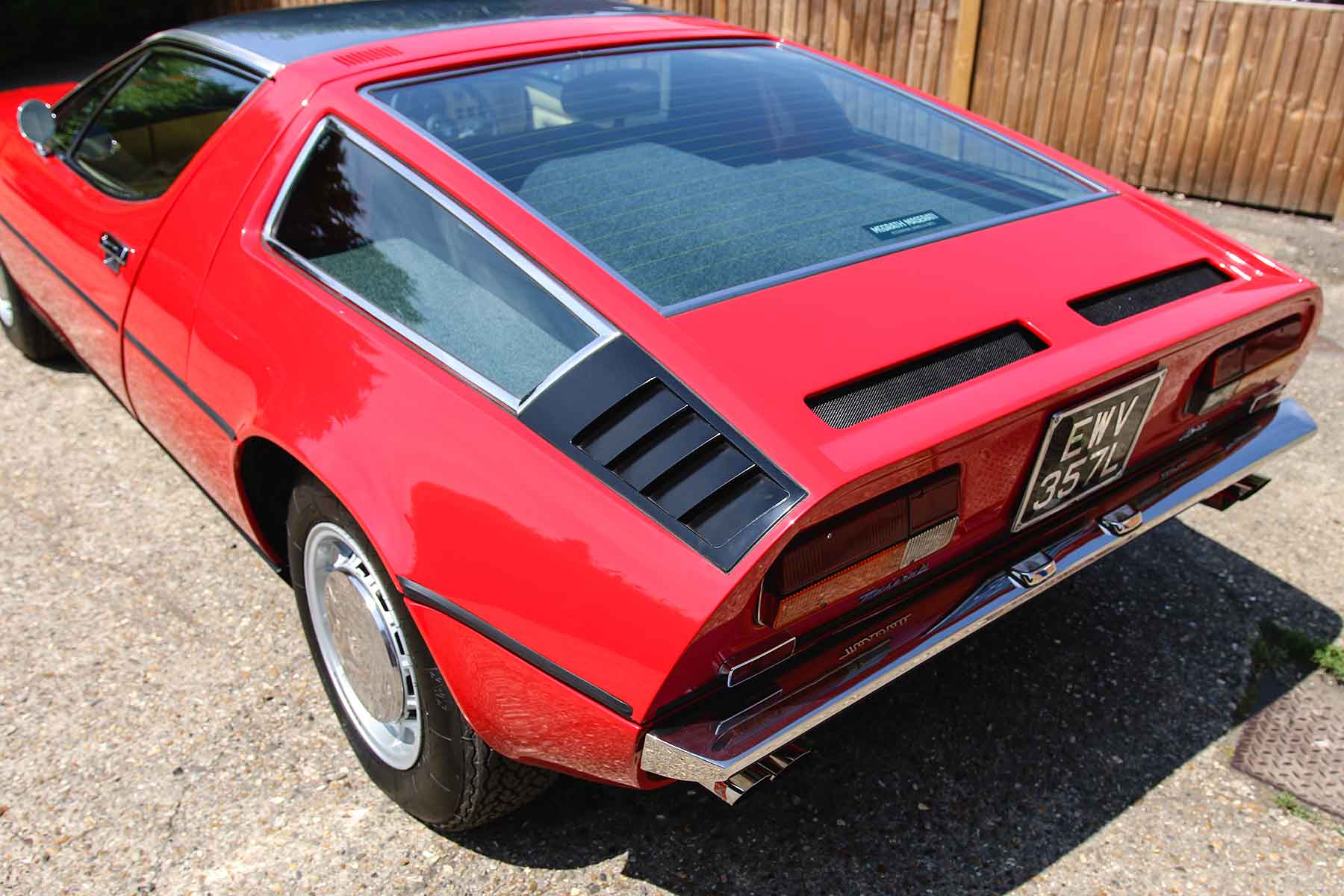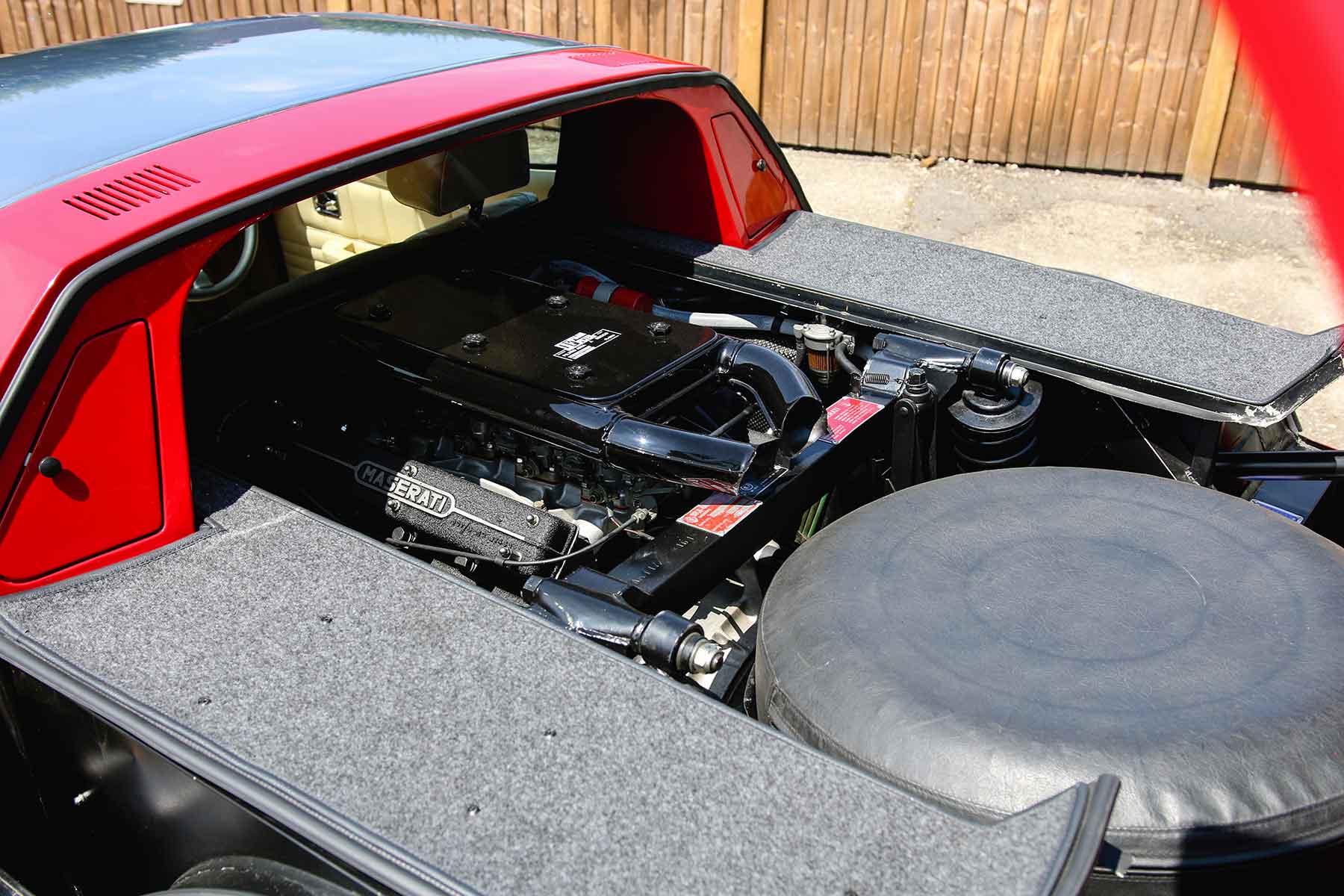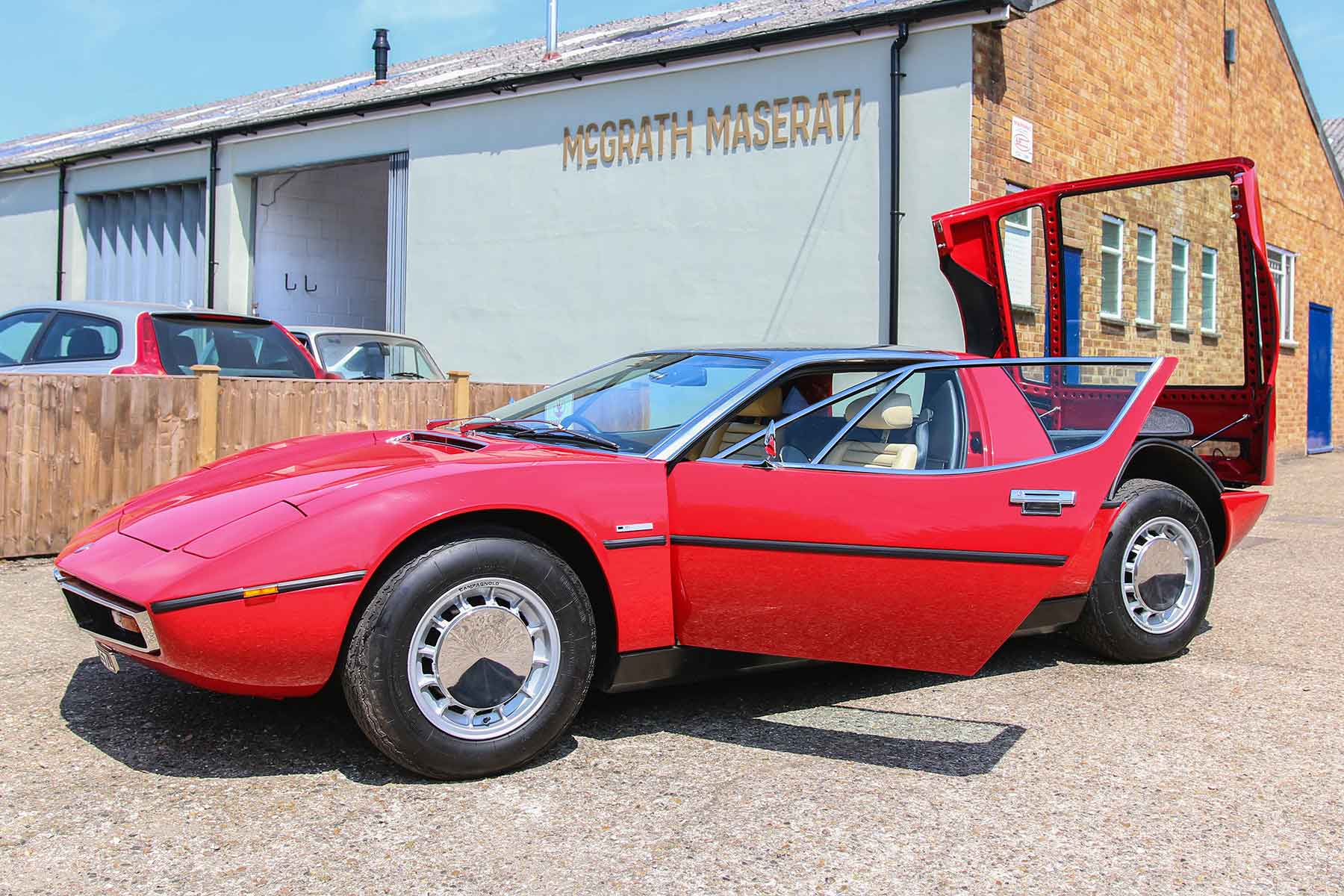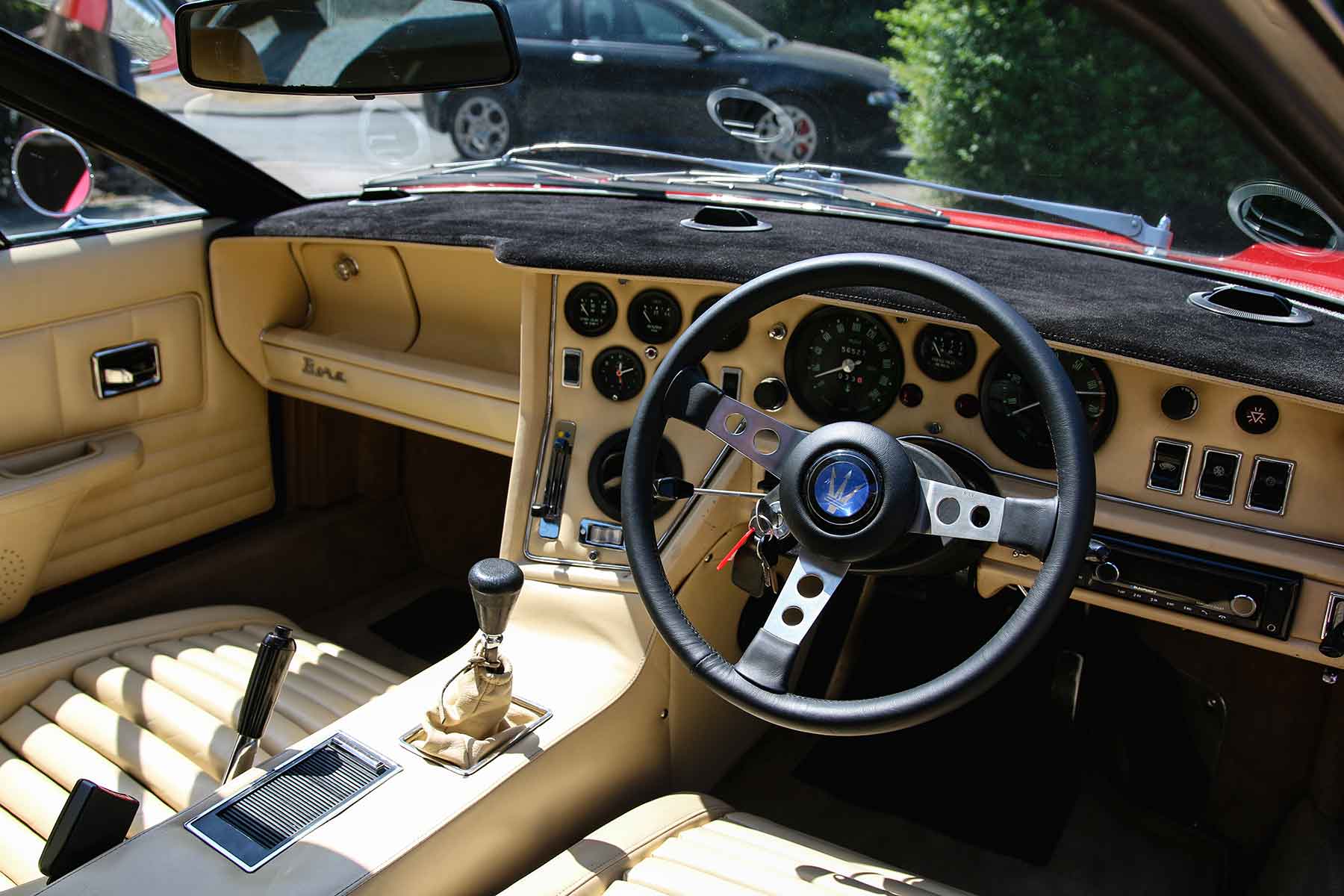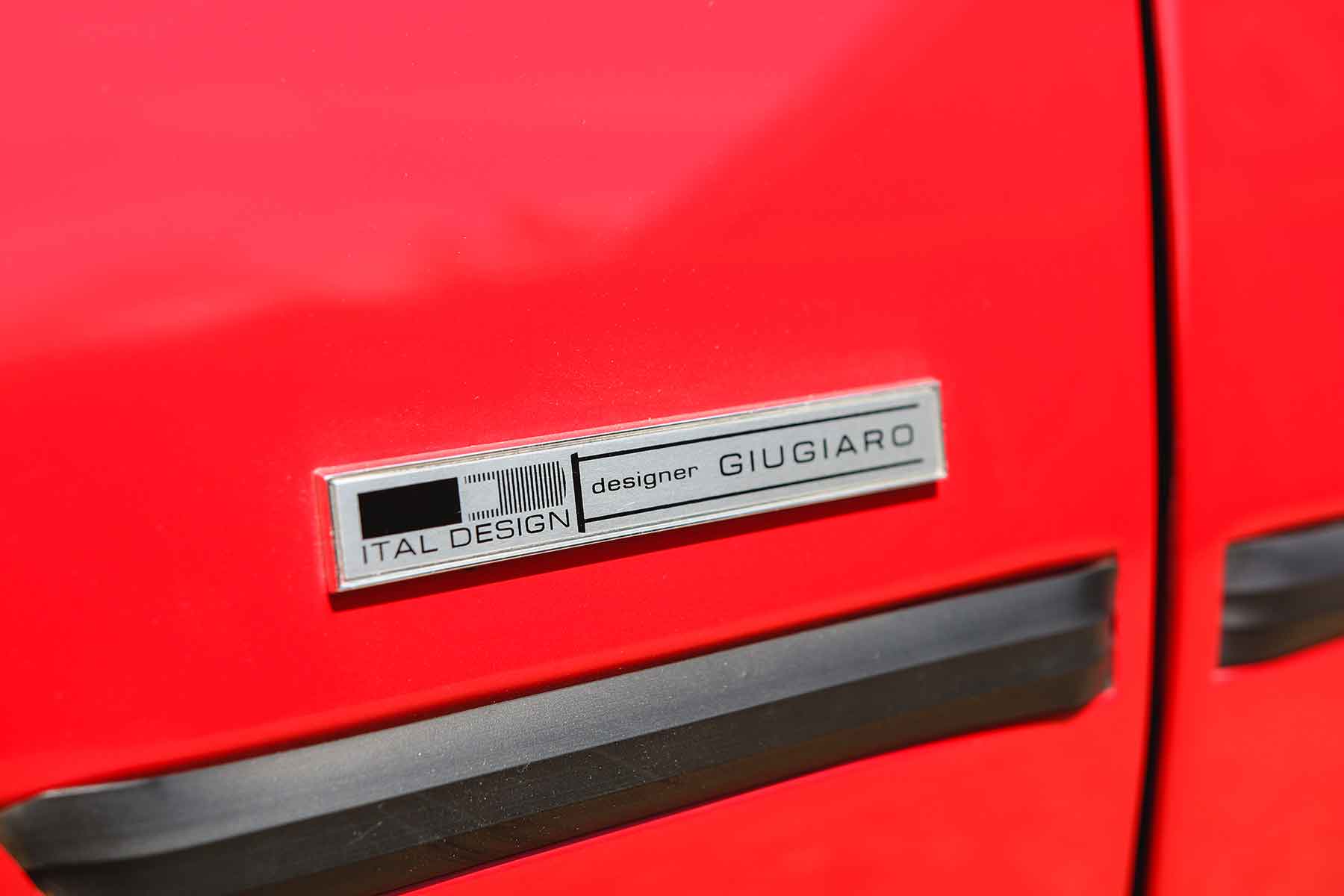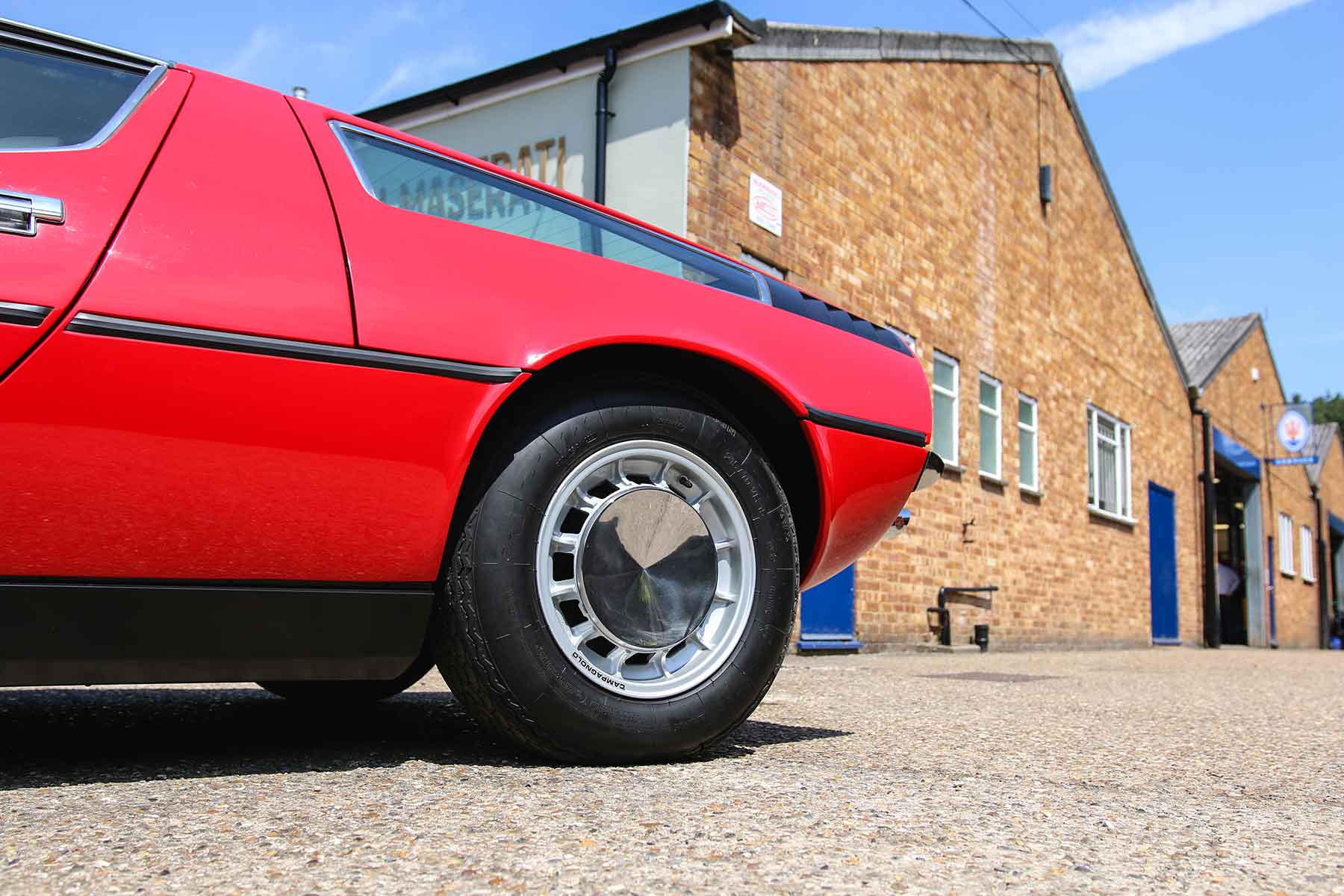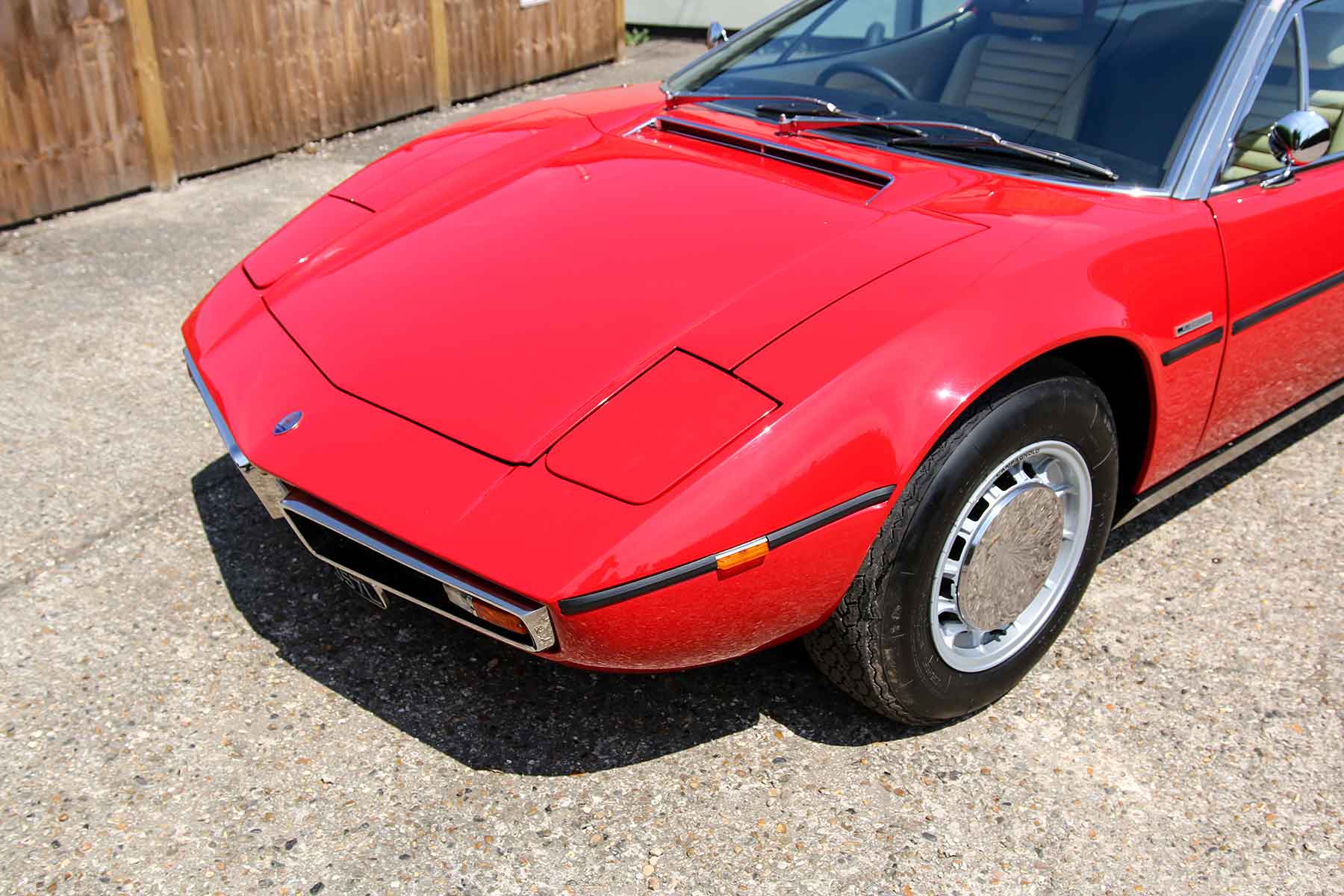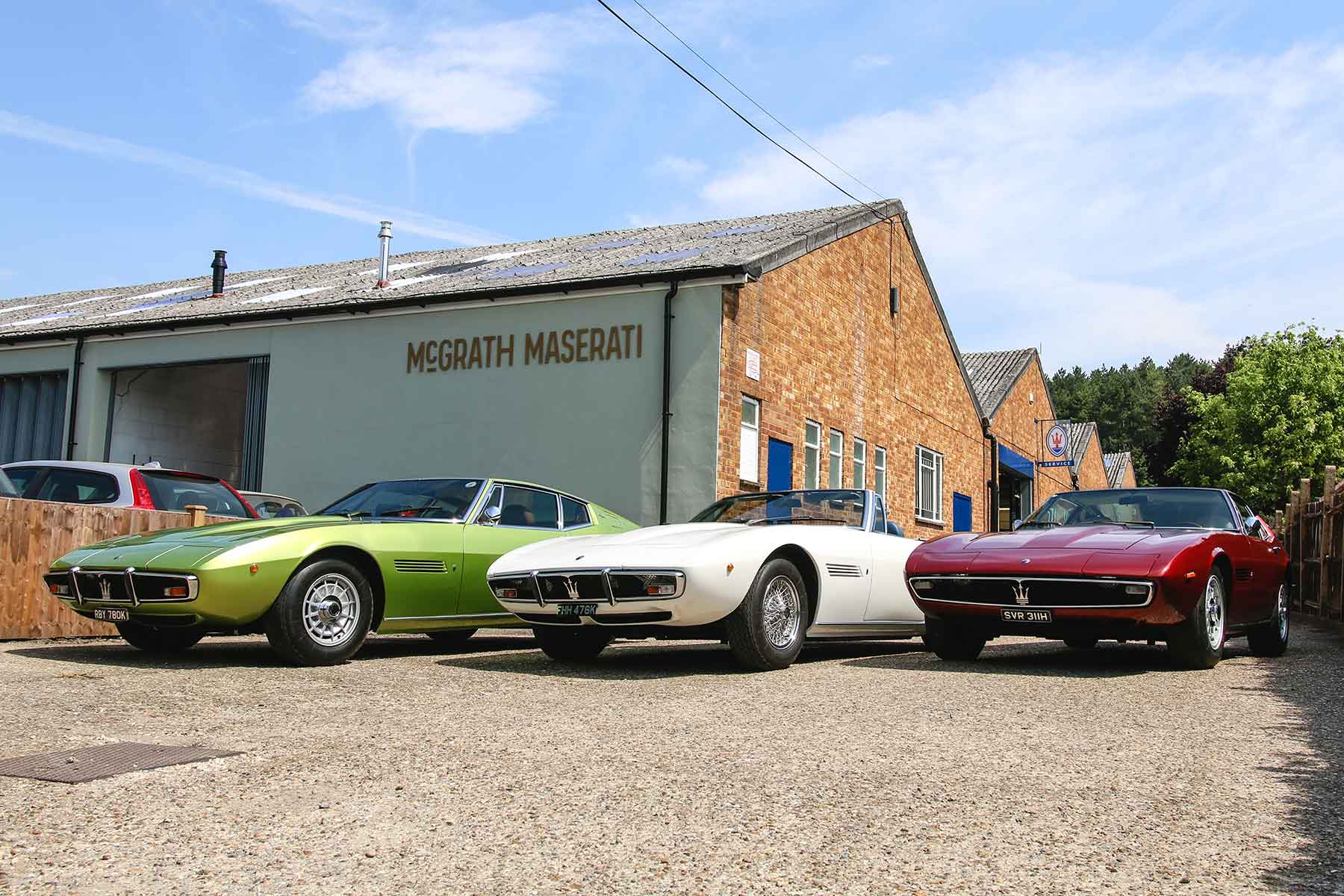
Maserati is perhaps the ultimate underdog. An unfair assessment of a company that’s produced such distinctive and desirable cars for over 100 years? Well, any luxury or sporting marque from Italy that isn’t Ferrari has to be considered something of an underdog, doesn’t it?
For many, that’s always worked in Maserati’s favour. Ferrari is, well, Ferrari. Maserati trades on its own merits. Such as the distinctive marque-defining sporting GTs in its post-grand prix era, which fortified the brand for generations to come.
Cars like those in this six-car cohort of ‘60s and ‘70s examples, in fact. These comprise ‘An Important Maserati Collection’, according to RM Sotheby’s. They’ll be heading to auction in London in September. Until then, they litter the quaint yet capable workshops of Bill McGrath Maserati – the UK’s most prolific Maserati preparer, restorer and service. Current custodian Stephen Dowling has been loyal to the business for a number of years.
Andy Heywood, long-time McGrath Maserati employee and now company owner knows these cars very well. Indeed, for his 30 years in various roles around McGrath, he knows all Maseratis very well. Just the man for the job of taking us on a tour of this handsome cross-section of Maserati’s golden age of Grand Touring.
1964 Maserati 5000 GT by Allamano
“It’s the jewel in the crown”
We start with what is arguably the star of the collection. This 1964 5000 GT by Allemano is a wondrous slice of Italian-built Americana, resplendent in red with a muscular yet subtle stance. In period, it was the most expensive car in the world. “It was like the McLaren P1 or Bugatti Chiron today. It was that kind of high-end thing,” says Andy.
This car was once in the ownership of Joe Walsh of The Eagles and allegedly inspired the lyric, “My Maserati does one eighty-five, I lost my licence, now I don’t drive” in his song Life’s been good.
Over the course of 34 cars, eight different coachbuilders were used to body them. Oddly, Allemano did the most, at 20 cars. “Allemano is a really obscure one… This is actually the most common one. Bizarre, because some of the coachbuilders were much more well-known and yet Allemano got the job to do more of those than anyone else,” Andy explain. Alhough he’s dealt with most of the 5000s that remain in circulation, Andy isn’t aware of any others that currently reside in the UK.
Great start in the McGrath Maserati car park. pic.twitter.com/hdZWfooPE0
— Ethan Jupp (@EthanIsSaying) July 6, 2018
Owner Stephen Dowling took his nervous first drive of his 5000 – complete with McGrath engine rebuild – at the Goodwood Motor Circuit, only to have his nerves replaced by complete ease and the desire to stretch the old Maser’s legs. A smattering of European trips ensued – no garage queens or place-holders for hedge funds here.
“From a very nervous start, he’s been everywhere in it. He’s been all over Europe. He’s done more miles in one of those than I’m sure anyone has done, ever… He’s a user, you know. He’s not just a collector. He’s always been into using the cars.”
1974 Maserati Quattroporte by Frua
“Stately but still sexy”
Contrasting the delicate curves and blushing red paint of the 5000 comes the 1974 Quattroporte, as bodied by Frua. This car is just one of two examples of the Frua-bodied car built. The story goes that Frua built this car in a bid to win the contract to body the second-generation Quattroporte, as it did the series one. It was a speculative build displayed at a motor show and while it didn’t win Maserati’s favour, one customer was insistent that he had to have one – the Aga Khan, or the closest thing to Iranian royalty.
“While they had it on a stand at a show the Aga Khan came along and said “Oh, I really like that. I’ll buy it.” They said, “Well, you can’t buy that. It’s a prototype, it’s got a second-hand engine. It’s a demo, really – but we’ll build you one.” So they used a new chassis and running gear from Maserati. The other one was subsequently then sorted and sold to the king of Spain, so it must have been alright.”
In its life, this the only ‘series’ Frua Quattroporte has shared garage space with the prototype that inspired it twice, with the cars holding high esteem among a seemingly closely-knit community of collectors. Based on a later Indy, it uses the 4.9-litre ‘Indy’ V8 engine: sufficient muscle to hustle what is a svelte yet stately beast. “The best resolved of all the Indys,” says Andy.
“What Maserati tried to build as the Series 2 Quattroporte, which Frua wanted their car to be, was based on the Citroen SM running gear. Nowhere near as classy as that [the Frua]. It’s a big car, kind of stately but still sexy at the same time” Andy mused. It’s certainly a highlight of the collection for us and being a one-of-two car, should stoke collectors’ interest sufficiently come September’s auction.
1970 Maserati Ghibli SS by Ghia
“Why would I buy an E-type when I can buy that?”
This, for Stephen, was the genesis moment. The car that gave him the bug. His first Maserati, as bought in Australia. “The original fascination was the red one” says Andy. “He hadn’t really been interested in old cars before that. Someone told him to go out and buy an E-Type. He went out to look at one at a dealership in Brisbane and saw the red Ghibli. He said, “why would I buy an E-Type when I can buy that?” – and from that moment he was hooked.”
This car had a difficult life prior to being bought and shipped to England. Import laws made it very difficult to have a left-hand-drive car brought in to Australia and, as such, the car suffered a slightly haphazard conversion. It landed on McGrath’s doorstep with both that and some questionable engine work to put right. From then on, the shop had a loyal customer.
Andy continues: “When that car had been imported it was an Italian-delivered car originally. It had been converted to right-hand drive from left. It was a bit compromised. He had an engine rebuild that didn’t work out by some guy in Australia. He turned up here one day, just walked in off the street and said “My name’s Steve, I’m from Brisbane. I’ve got a Ghibli out there with engine problems. How much to rebuild the engine?” and that was how our relationship started 14 years ago.”
You wouldn’t know this Ghibli’s troubled past from looking at it. This, as well as the other five cars, are presented in absolutely pristine condition, and rightly so. Giving someone the bug for a marque is the honour of very few cars. This red Ghibli has that honour. “It holds a very special place in his [Stephen’s] heart.”
1970 Maserati Ghibli SS Spyder by Ghia
“Made for the Cote D’Azure”
The white Ghibli SS Spyder is perhaps the most intriguing of the three in this collection. As an SS Spyder it’s already rare, but in right-hand-drive configuration, it’s one of just four cars made. For its rarity, this car also earned itself a concours-standard restoration with period-correct Connolly leather hides used in the cabin and a pristine Bianco repaint – a five-year undertaking that’s just finishing now.
The car had been restored previously around 30 years ago, albeit not to the standards customers ask of today. “When it came back before we began restoring it in 2013, it needed work but it was still good enough for the Maserati Club stand at the NEC Classic Car Show.”
“We’d restored that car for a previous owner who then sold it to Steve 15 years ago. He used that out there [Australia] for a number of years. We’ve been restoring it for five years – we’re just finishing it really. This is the concours-standard car – a brilliant challenge to relish taking the car to new levels. The one we’re probably most proud of.
Maserati. Variety. Struggle to pick to be honest, though the one-of-two Frua Quattroporte is a very special thing. pic.twitter.com/fJqfWFtsaT
— Ethan Jupp (@EthanIsSaying) July 6, 2018
“When it came back before we restored it in 2013, it needed work, but it was still good enough for the Maserati Club stand at the NEC Classic Car Show.” says Andy. Nothing less than perfection, then.
The car was originally delivered to the UK to its first owner, Sheikh Hamad bin Khalifa Al Thani. A first owner befitting, we think, of a right-hooker Spyder’s best talents – the unassuming yet impressive cruiser. Andy agrees: “You look at that car and you just imagine driving down the Cote D’Azur. It’s what these cars are made for.”
1971 Maserati Ghibli SS Coupe by Ghia
“The one they saved”
You could certainly claim that some of these cars have, to an extent, been saved by the owner – none more so than ‘Kermit’ the Verde Gemma Ghibli SS. Acquired in 2007, the car was, by all accounts, in something of a sorry state. A rare right-hand-drive SS, today this wouldn’t be enough to deter a prospective buyer, because it’d be well worth the investment. But at the time these cars hadn’t hit their stride in the classic market.
“This car was the biggest challenge” muses Andy. “Anyone else would have thrown this away… In anyone else’s hands at the time this car could well have been lost, but Stephen liked to set us a challenge.”
Looking at the way the pristine hue emboldens Giugiaro’s subtle humps and dips in the hand-rolled bodywork, we couldn’t possibly imagine a time when it had flirtations with the scrapheap. The cabin is a stunning ‘70s brown – proper GT spec.
Andy tells us there are concessions to modern comfort and usage. A larger alloy radiator means this temperamental classic is just a touch better-prepared for day-to-day usage. “This was more about what Steve actually wanted. The day he collected it after the restoration, he took it straight to Austria. He called me up saying, “I’ve just been chasing a Gran Turismo – that car’s amazing!” I said, “It’s still running in, Steve!” He said, “I don’t care!” It’s had work since to keep it in tip-top shape…”
1972 Maserati Bora 4.7
“The more subtle ‘70s supercar”
The Bora has this reputation as the ‘70s supercar that boyhood posters forgot. It’s very pretty, with the devil hiding in the details – a design philosophy not necessarily befitting the era that belonged to the Lamborghini Countach and Ferrari Daytona. Still, stainless steel sheeting on the roof makes an impression in person, as does the neat yet muscular hindquarters and purposeful snout.
There’s evidence to suggest this is the first of what you might call user-friendly supercars. “The engine you can actually get out in five hours. Try that in a Miura… It’s that weird combination. Outrageous-looking yet it has space for luggage, and the cabin is comfy.” It even features pedals that move toward you with a steering column that goes up and down.” (The seat doesn’t move back and forward). Eat your heart out, Ford GT and LaFerrari…
While masters of the wedge since the introduction of Giugiaro’s Ghibli in the late ‘60s, Maserati never embraced the full supercar experience you associate with that design ethos. The Bora, while wearing that shape, was a classic Maserati at its core, like the Ghibli or the 5000 GT – a grand tourer.
“You’re not into fifth until past 130. It’s not a supercar as much as it is a super GT – a classic Maserati at its core. Still built with the Maserati DNA. Don’t make it like a go-kart, make it so you can cross continents.”
The golden age of Maserati

We asked whether our assessment that these cars represented a golden age for Maserati was fair. Andy’s response was fairly conclusive: “Definitely. Our era goes from about the mid-50s to about 2012, but that classic era from the mid-‘50s to the mid-‘80s has to be it”. What was Andy’s pick of the six? “It has to be the 5000 GT. It’s just the business, isn’t it?”
These cars then, are the perfect cross-section of everything we know and love about Maserati. Their legacy lives within the prongs of the trident. They’re why we forgave it for the anonymous (and ironically now quite desirable) boxes of the 1980s and 90s, only to rejoice at the return of the pretty grand tourer, only to forgive again that said car was the 3200 GT…
Today, Maserati is where it should be – selling to a bigger customer base than ever before, as well as building on its heritage. These classics give us a better appreciation of just what a proper Maserati should be — “An Important Maserati Collection” indeed. May they find loving homes with RM Sotheby’s in September.
